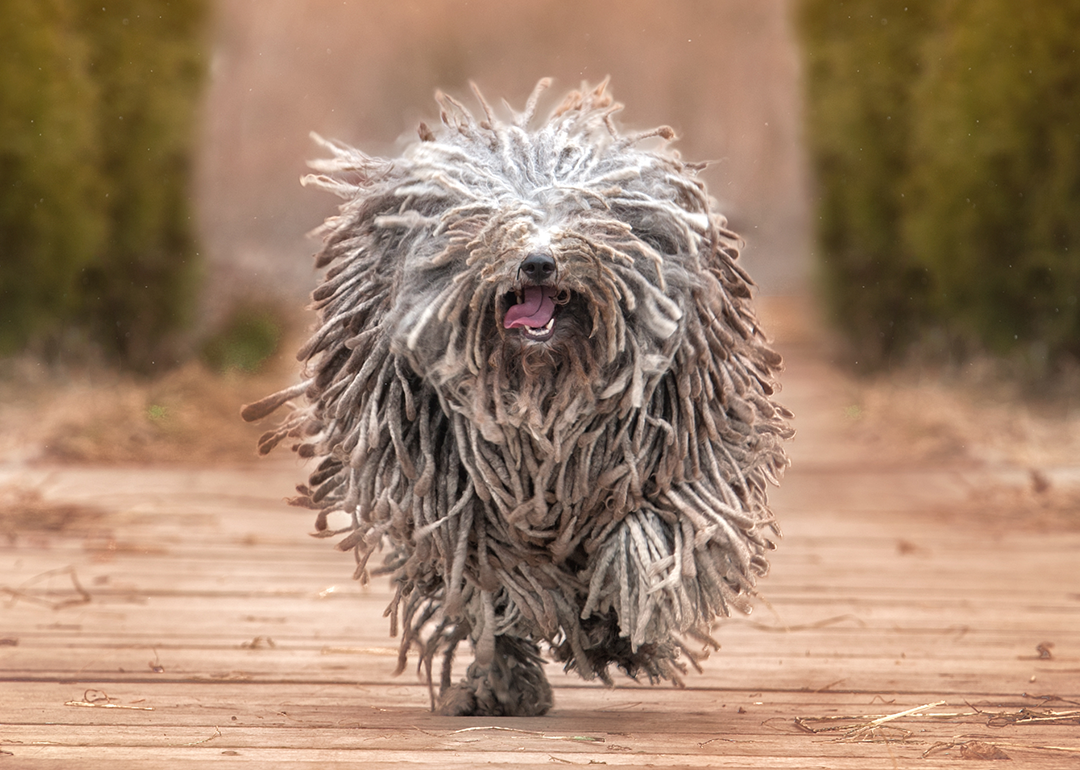
Least popular dog breeds in America
Least popular dog breeds in America
Pop culture presents the usual suspects when it comes to canine companions. Golden retrievers, German shepherds, Labradors, and poodles, to name a few, are easy to spot and name both on screen and on sidewalks. While no one dog breed should get more love than another, human nature can lead us to play favorites. With 201 registered breeds, some inevitably fall to the bottom.
To help understand what guides our choices, Stacker broke down the 50 least popular dog breeds in America in 2024 based on data released by the American Kennel Club on March 19, 2025.
Some factors that play into a breed's national popularity—or lack thereof—are obvious: size, maintenance, allergies, disposition, and temperament. But name recognition is just as important; consider why Labradors, retrievers, and bulldogs are among the most popular annually, while some of the least popular breeds were only officially recognized by the AKC in the past five years. Another barrier to popularity can be access—newer or less common breeds have far fewer reputable breeders, which limits the options for making one of the lesser-known breeds a part of your family.
Keep reading to discover 50 lovable kinds of dogs you may not have heard of.
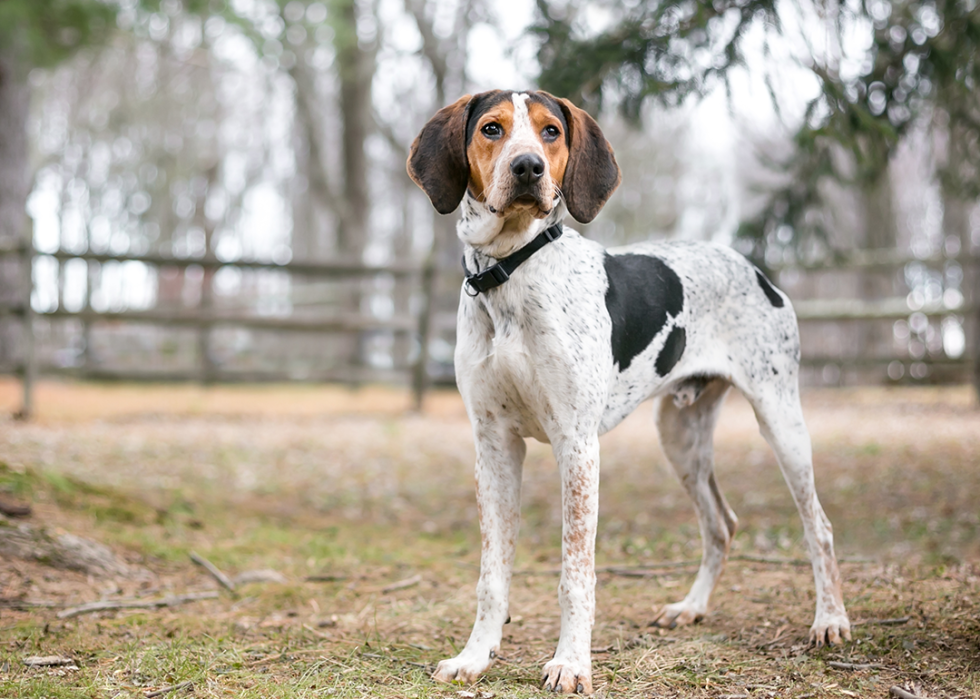
#50. Treeing walker coonhound
- 2024 popularity rank: #152 (up 3)
First bred in Virginia, these dogs are Southern hunters through and through. Once the dog trees its prey—usually a raccoon—it will let out a distinctive bark to let its owner know where to find supper. These dogs are great with kids, but not ideal if your household has other pets smaller than your prolific hunting dog.
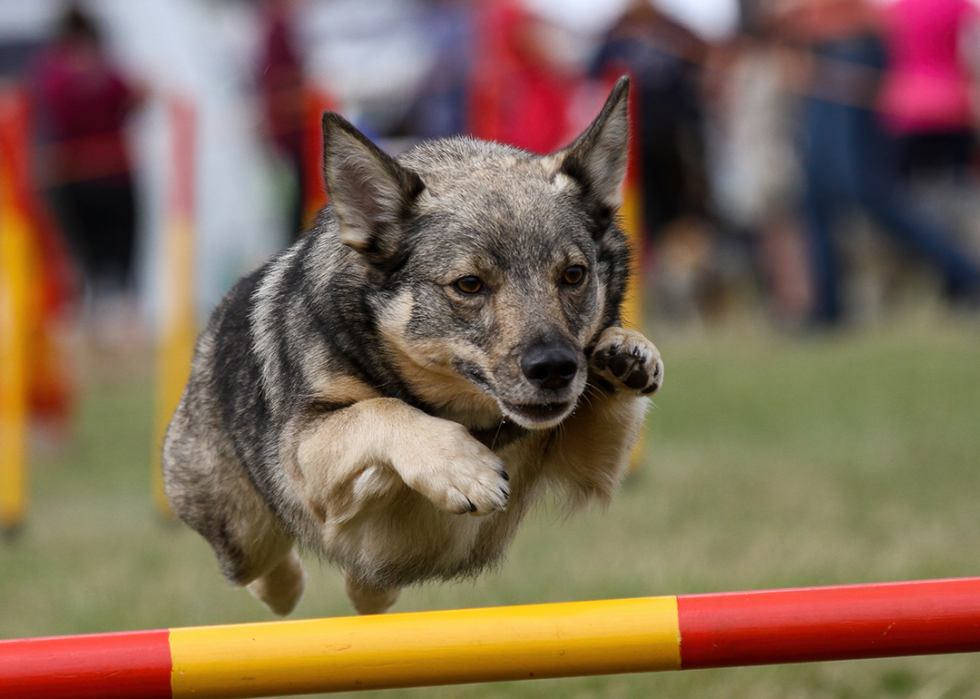
#49. Swedish vallhund
- 2024 popularity rank: #153 (down 15)
A breed at least 1,000 years old, this corgi relative has a distinct feature—its tail. Many Swedish vallhunds are born without tails, while others have nubs or long tails.
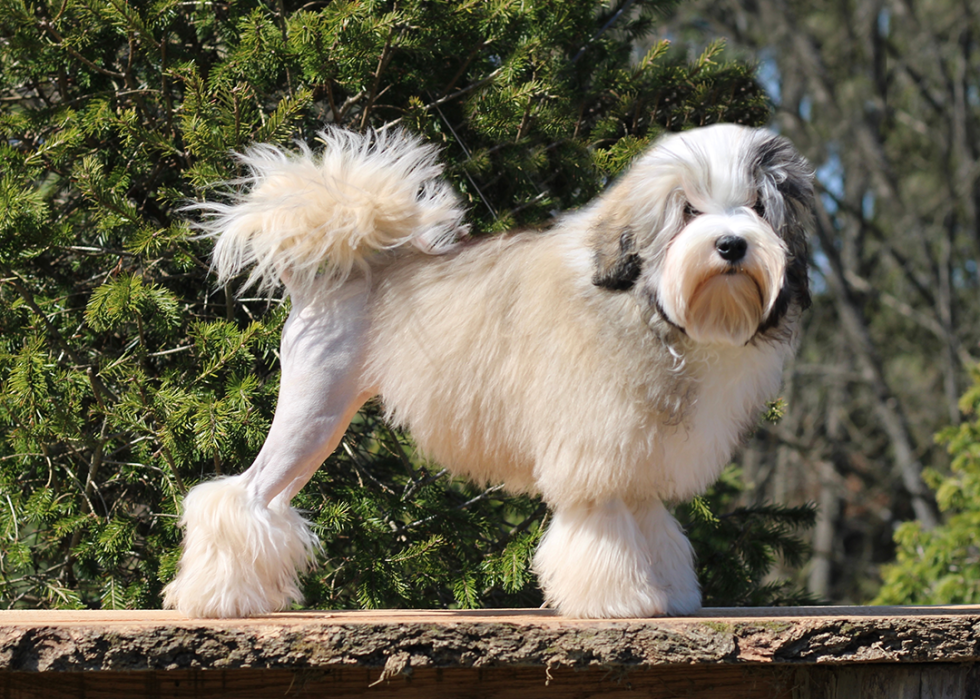
#48. Löwchen
- 2024 popularity rank: #154 (up 5)
Löwchen translates to "little lion"—an appropriate nickname for a breed that often sports an impressive mane. Löwchens are primarily companion dogs, and their gentle natures make them ideal for work as therapy dogs, as well.
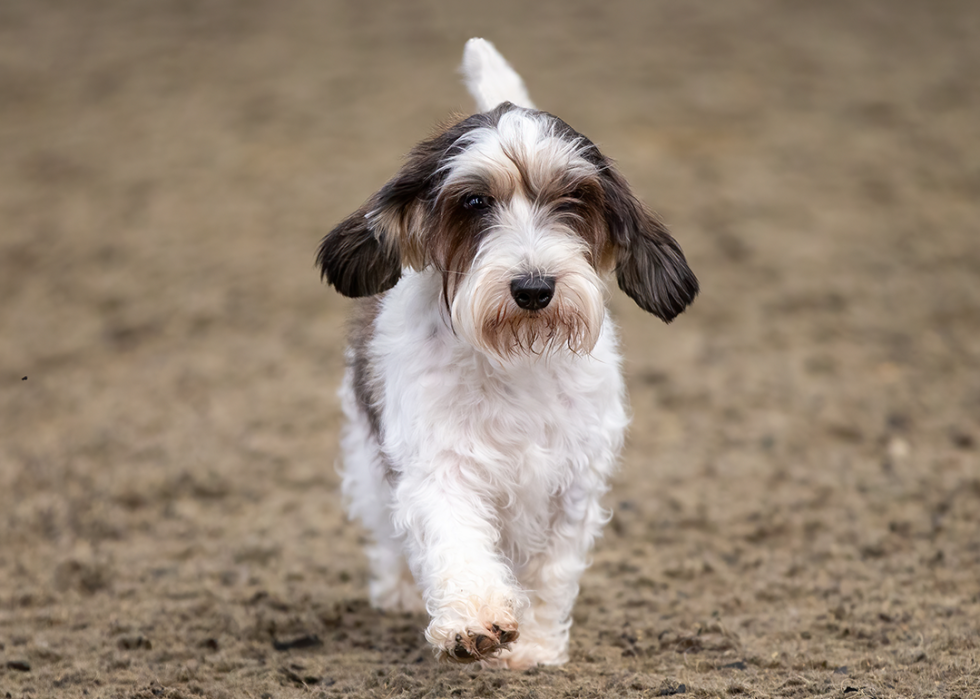
#47. Petit basset griffon Vendéen
- 2024 popularity rank: #155 (up 3)
Each word in this French breed's name is relevant to the description of this dog, which is small with short legs and wiry coats that come from the Vendée region of France. As a true pack dog, this breed is happiest surrounded by other pets and family members.
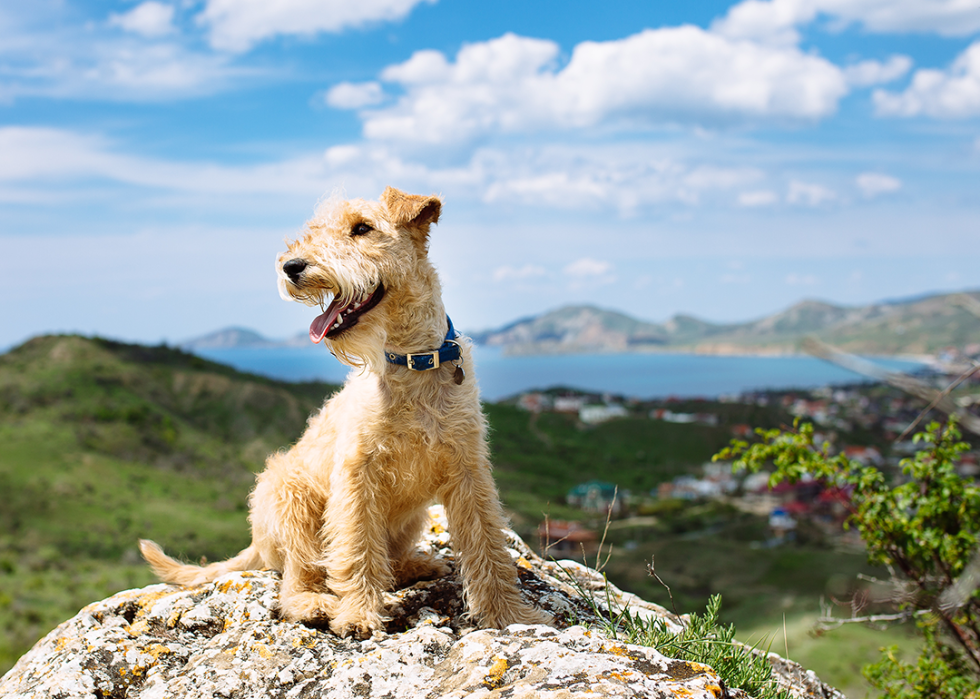
#46. Lakeland terrier
- 2024 popularity rank: #156 (down 3)
Lakeland terriers are increasingly rare. The small dogs once worked the Lake District in England, and they are notorious burrowers. The first president of the Lakeland Terrier Association claimed he had a Lakeland terrier that chased an otter into a 23-foot burrow (and had to be rescued as a result). Lakelands are mostly hypoallergenic and bond with their families despite being of a more independently minded breed.
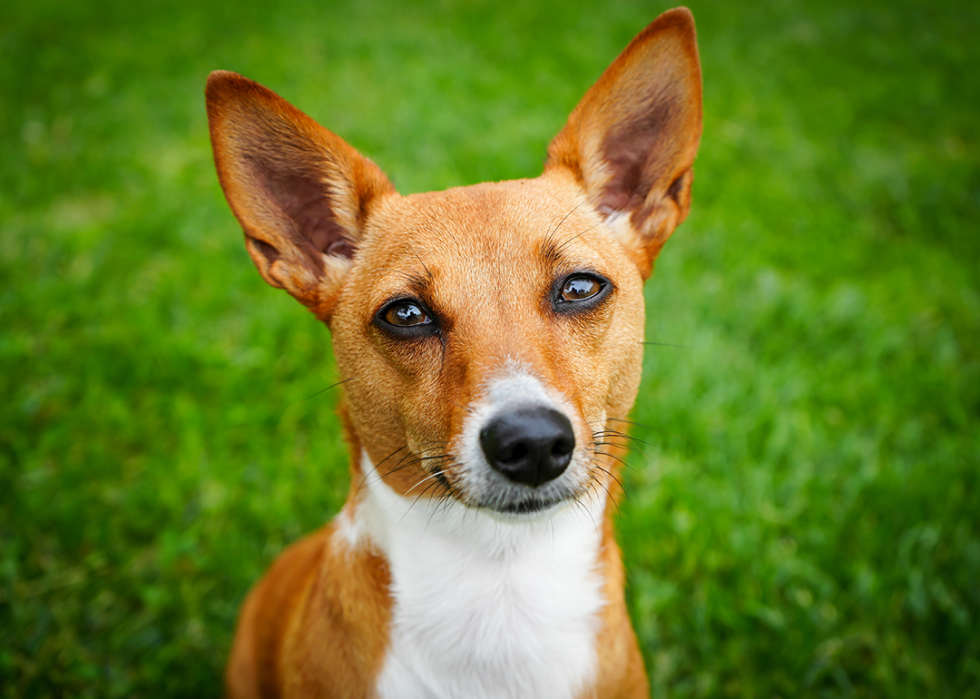
#45. Portuguese podengo pequeno
- 2024 popularity rank: #157 (up 6)
The official dog of Portugal was once commonly found on the ships of medieval Portuguese explorers. These days, these small dogs can still be keen hunters but are just as happy being their owners' best friends. In Portugal, the breed is classified into three size categories (small, medium, and large) but in the United States, the Portuguese podengo has two sizes (large and medium), which is a separate breed from the Portuguese podengo pequeno.
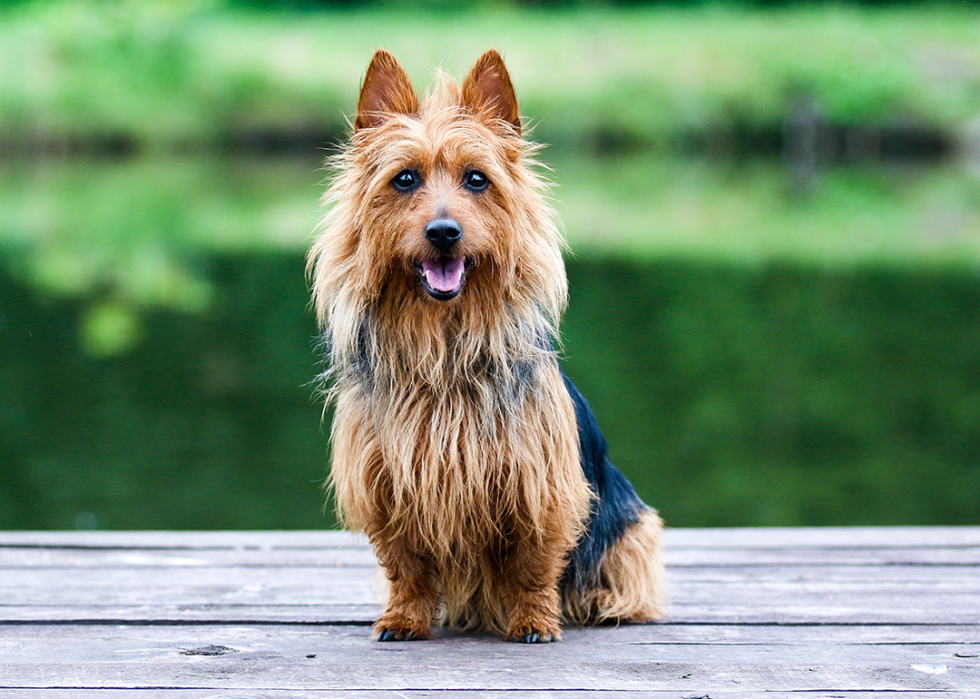
#44. Australian terrier
- 2024 popularity rank: #158 (down 2)
The Australian terrier is a frontier dog bred to be an exterminator of snakes and small mammals, even perfecting a "leap-twist-and-pounce" technique. Nevertheless, these sweet dogs want nothing more than to play and keep their owners happy. Despite their good nature, this scrappy breed has a history of working on farms.
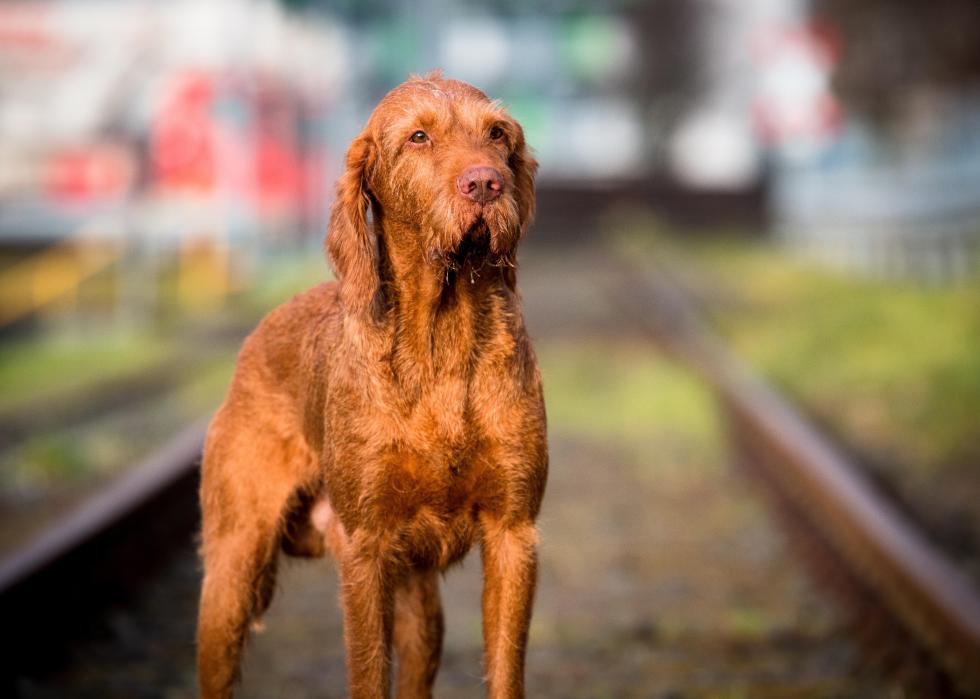
#43. Wirehaired vizsla
- 2024 popularity rank: #159 (down 17)
The wirehaired vizsla is an incredibly trainable, disciplined, and gentle breed. Not only was this breed the first to become an American Kennel Club quintuple champion, but vizslas are also one of the Transportation Security Administration's preferred bomb-sniffing dogs. If you're considering this breed, be ready to give your dog plenty of exercise.
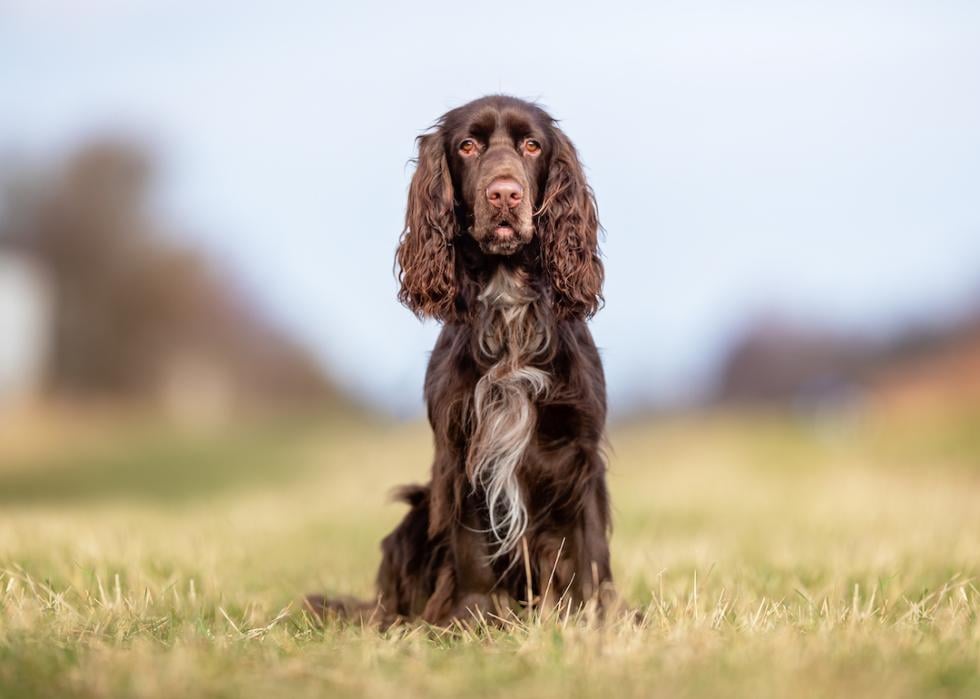
#42. Field spaniel
- 2024 popularity rank: #160 (down 13)
These dogs were primarily bred to be show dogs and pets. Their reputation as superior companions remains unchallenged, as they're docile, loyal, and happiest by their human's side.
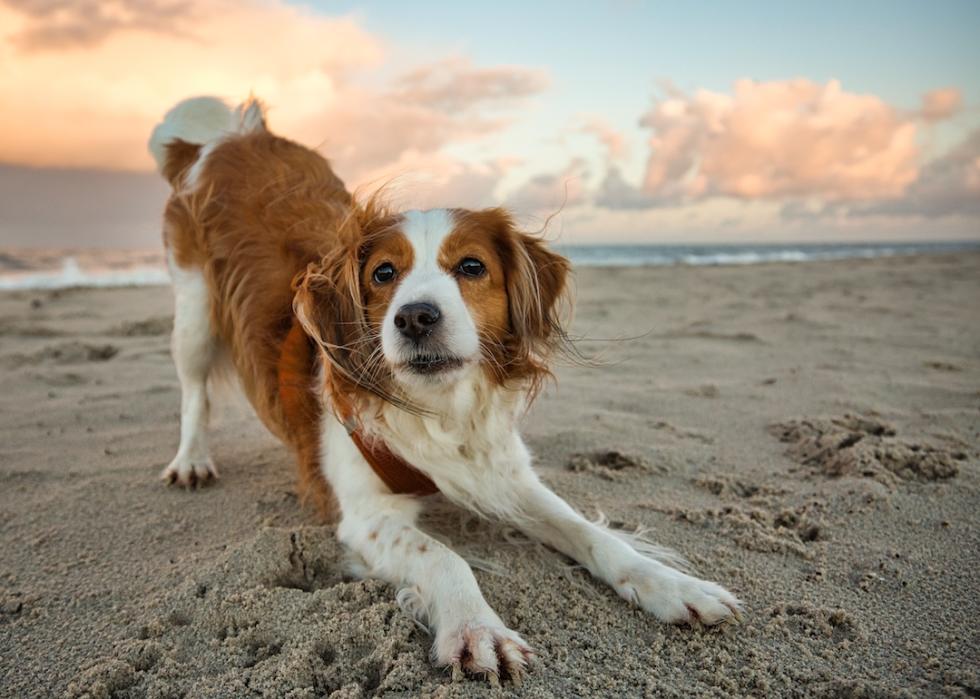
#41. Nederlandse kooikerhondje
- 2024 popularity rank: #161 (no change)
A real sporting dog at heart, Nederlandse kooikerhondje are known to be lively, self-confident, alert, and good-natured pups. Apart from their adorable black-tipped ears, this "little white and orange dog with a big heart" is also a faithful furry friend, making them ideal playmates to have in the home—but they also don't mind exerting some of their energy outdoors, either.
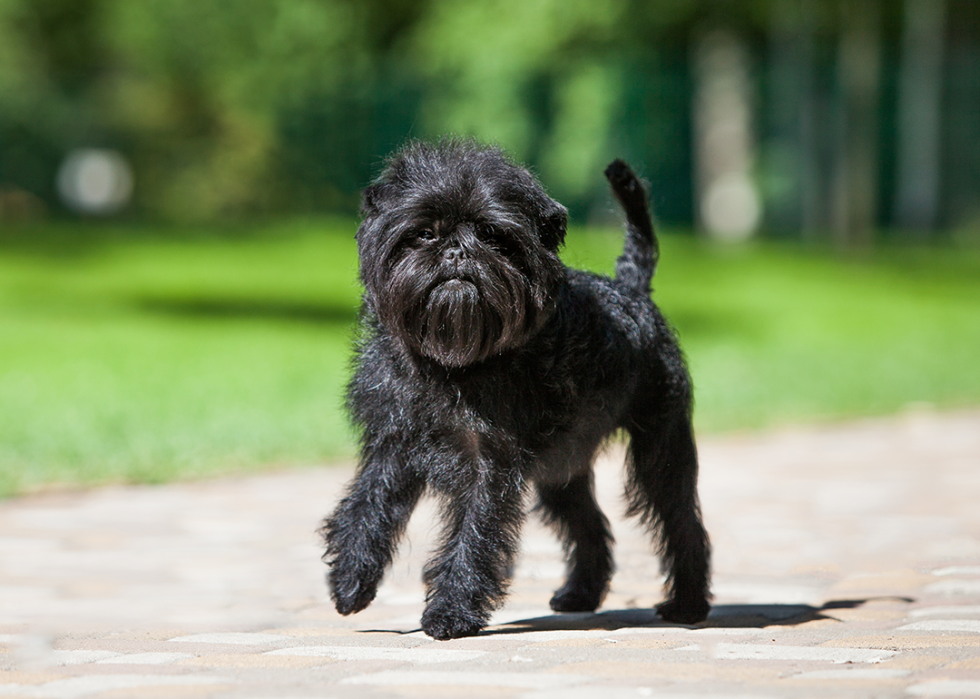
#40. Affenpinscher
- 2024 popularity rank: #162 (no change)
This breed has been described in French as "diablotin moustachu," or a mustached little devil. The nickname is affectionate and has more to do with the dog's coat than personality. Affenpinscher translates to "monkey terrier," which makes sense, considering the breed is known for its dexterity and ability to grasp things with its front paws.
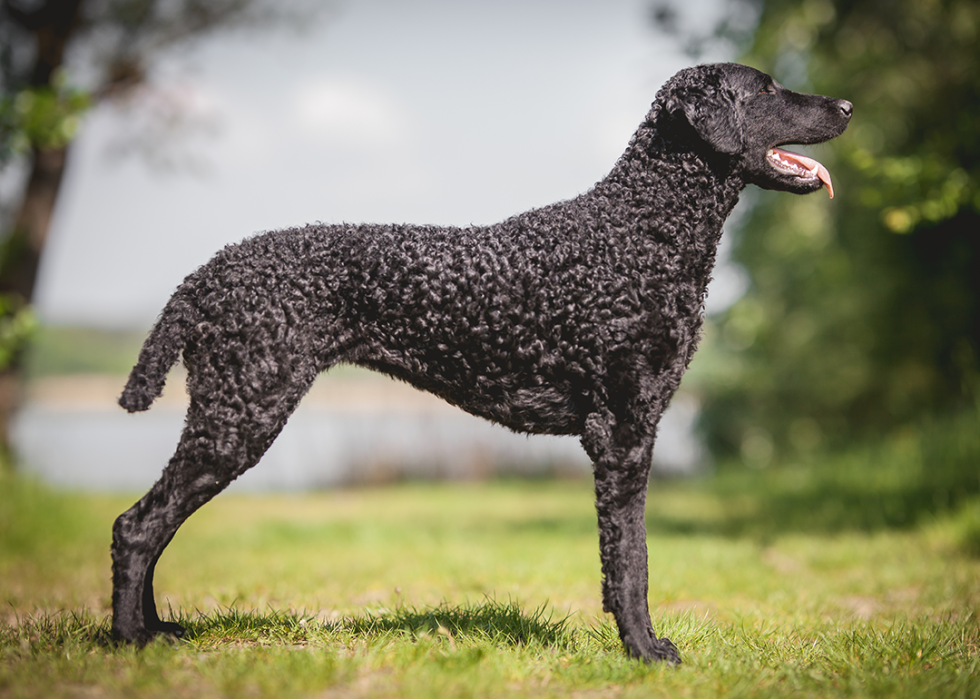
#39. Curly-coated retriever
- 2024 popularity rank: #163 (up 4)
These retrievers are known for their spectacular curly coats. While they look like they've been crossed with poodles, curly-coated retrievers share no relation. As with all retriever breeds, these dogs are loving, make great family pets, and are eager to please.
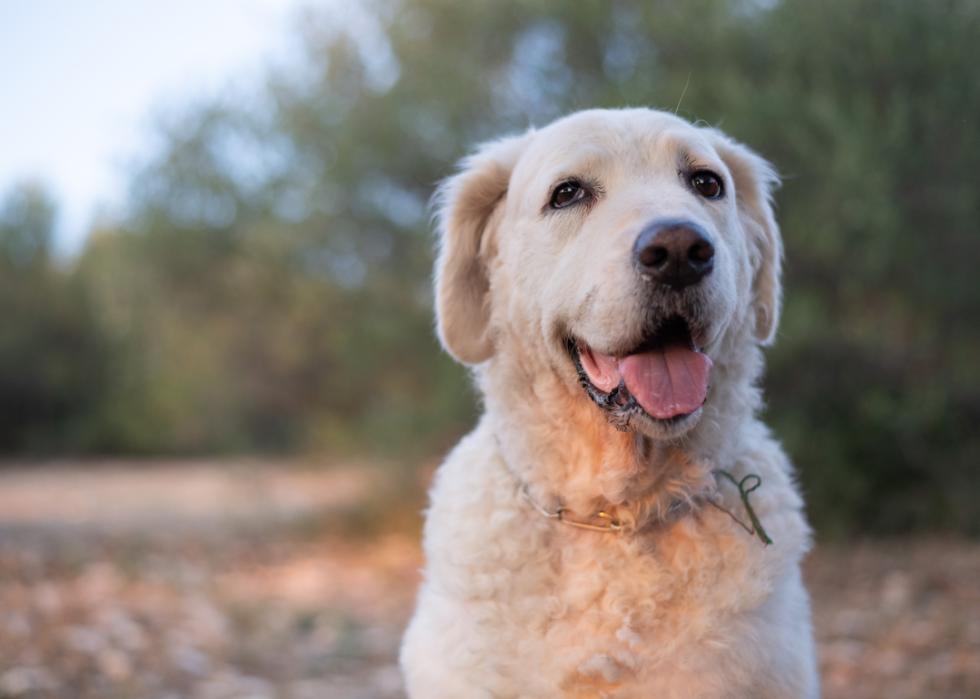
#38. Kuvasz
- 2024 popularity rank: #164 (up 9)
Hailing from Hungary, this was the chosen breed by King Matthias I. They are extremely loyal and will even sacrifice themselves to protect their humans. The troubled king is believed to have trusted his beloved kuvasz more than any human in his court.
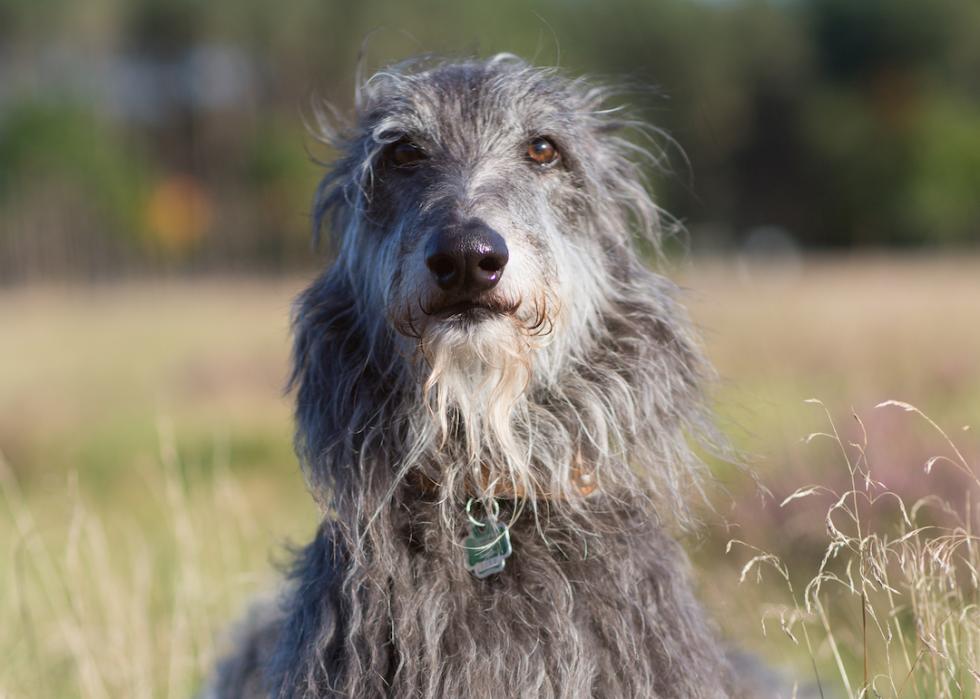
#37. Scottish deerhound
- 2024 popularity rank: #165 (up 6)
The Scottish deerhound is a friendly enough dog, but they love a good chase—which means a workout for their owners. Playing fetch isn't their forte, however, and neither is barking when a stranger is at the door.
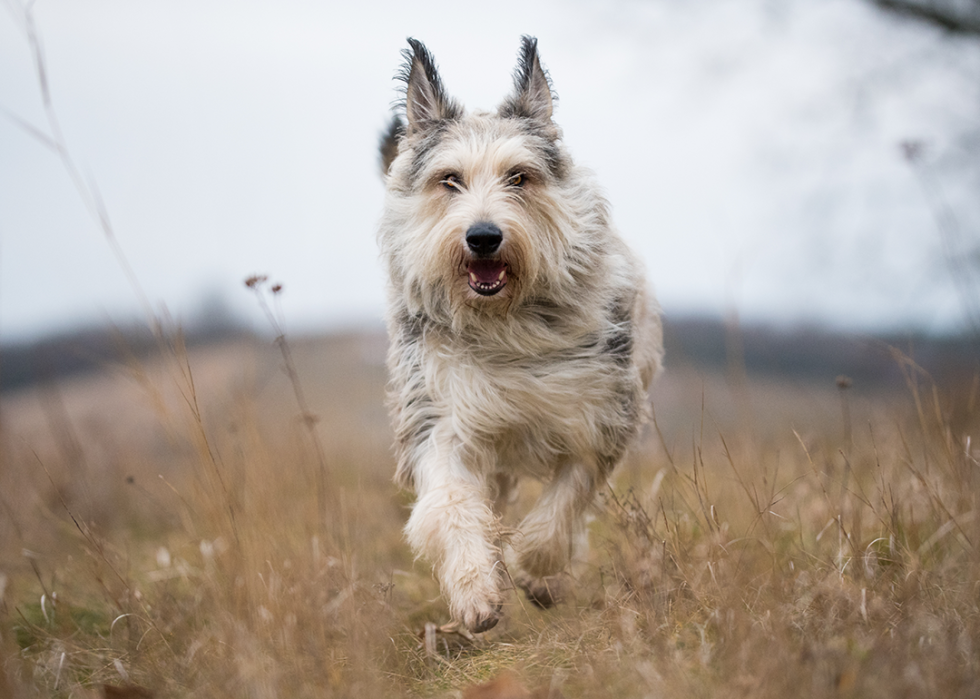
#36. Berger Picard
- 2024 popularity rank: #166 (down 9)
These dogs made perfect smugglers due to their unique coats. The breed was reportedly used to smuggle tobacco and matches across the Franco-Belgian border. Furry pouches of tobacco would be strapped to shaved dogs, who would then go unnoticed as they moved the contraband across the border.
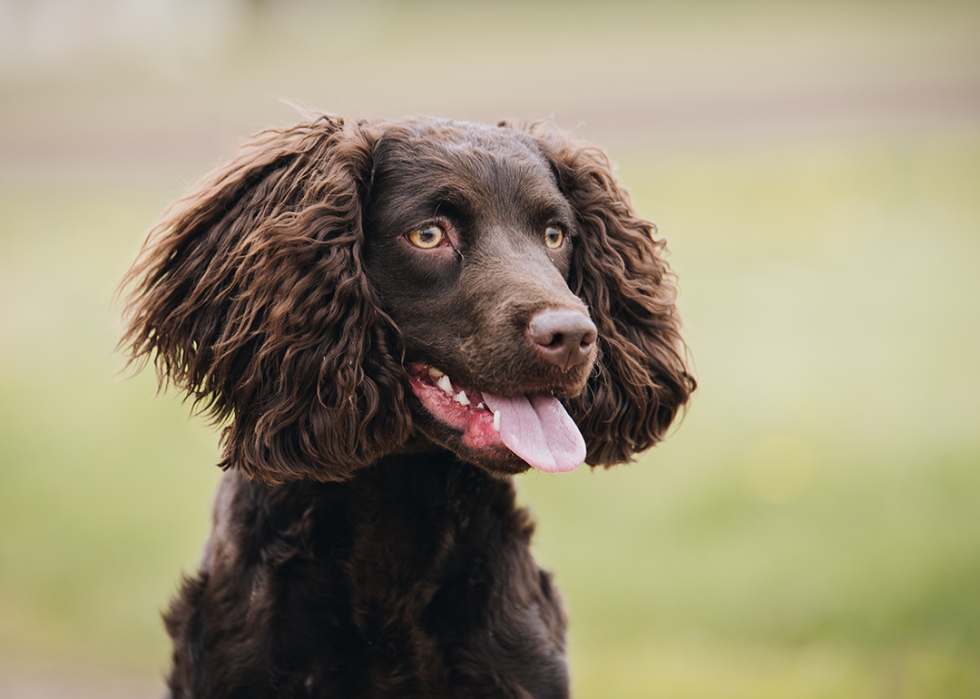
#35. American water spaniel
- 2024 popularity rank: #167 (up 1)
The American water spaniel is the state dog of Wisconsin. These sweet hunting dogs were bred to dive off boats after prey, making them a favorite for people who live in the Great Lakes region of the United States.
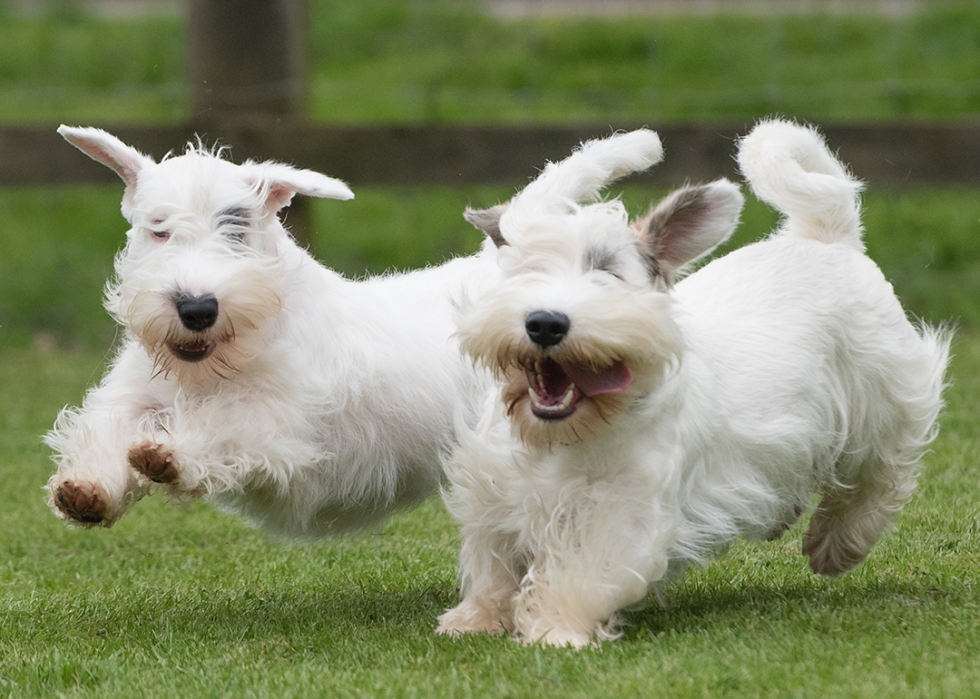
#34. Sealyham terrier
- 2024 popularity rank: #168 (up 1)
These white terriers were bred specifically to hunt small game like badgers, otters, and pheasants. Even the breed's white coat played a role in its work as an excellent hunting companion. The stark shade allows the dog to stand out in landscapes full of brown and gray hues. Sealyham terriers are known for their fearlessness and outgoing nature and can make great family pets as long as they're kept away from any other, smaller pets who they're likely to hunt.
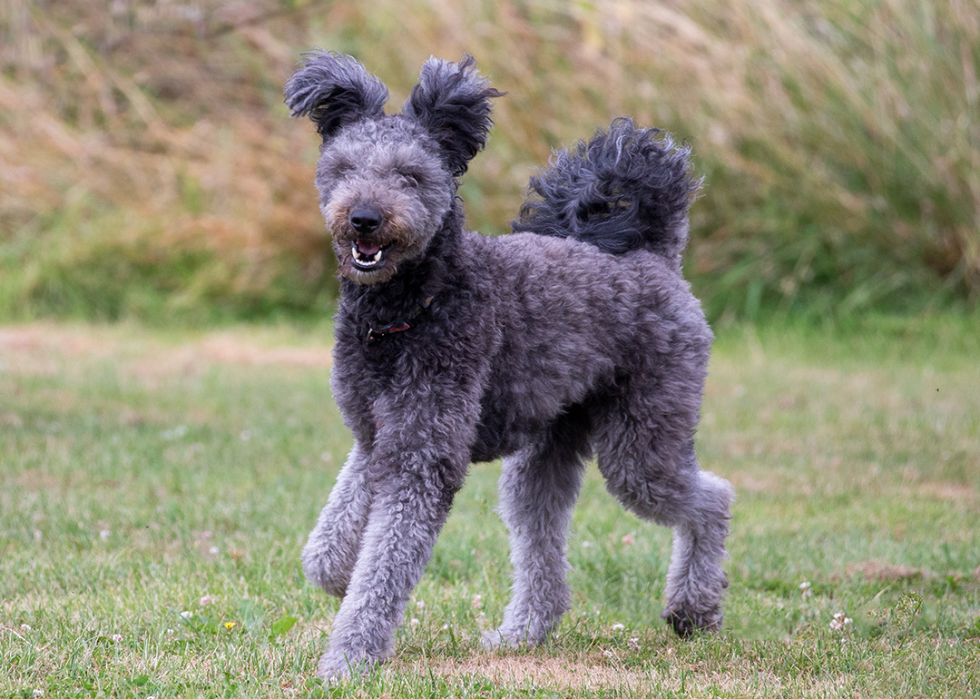
#33. Pumi
- 2024 popularity rank: #169 (up 3)
The pumi originated in Hungary as far back as A.D. 800. Officially adopted by the American Kennel Club in 2016, a pumi is easily distinguished by its corkscrew curls and incredible intelligence. The breed's history as a sheepdog in the Hungarian countryside makes pumi best suited to active, outdoor lifestyles with lots of attention from their owners.
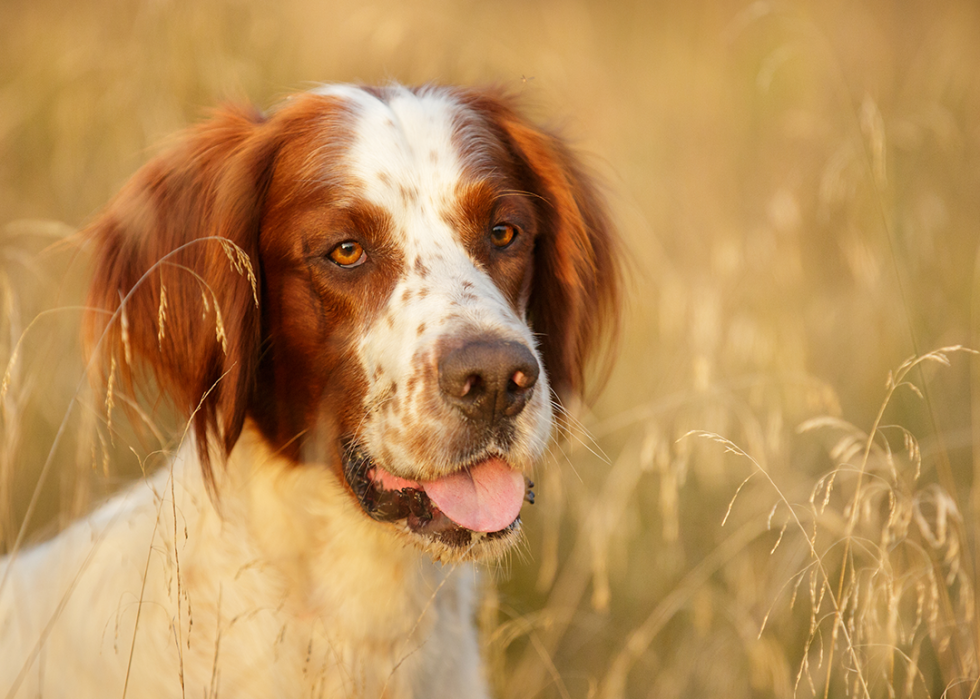
#32. Irish red and white setter
- 2024 popularity rank: #170 (down 5)
Not as well known as its cousin, the Irish red setter, this breed almost went extinct during World War I. They make excellent hunters (and fun, high-energy family dogs). They make great companions in the outdoors, on hikes or bike rides.
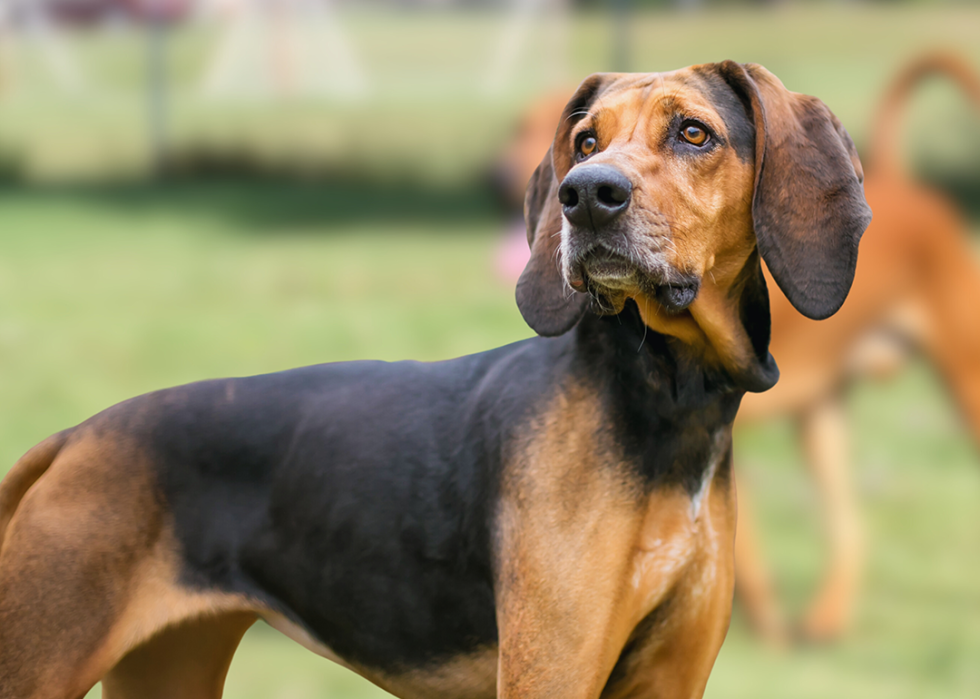
#31. American English coonhound
- 2024 popularity rank: #171 (up 7)
American English coonhounds are believed to have a presidential origin story. Evidence suggests George Washington was one of the first people in America to own these dogs.
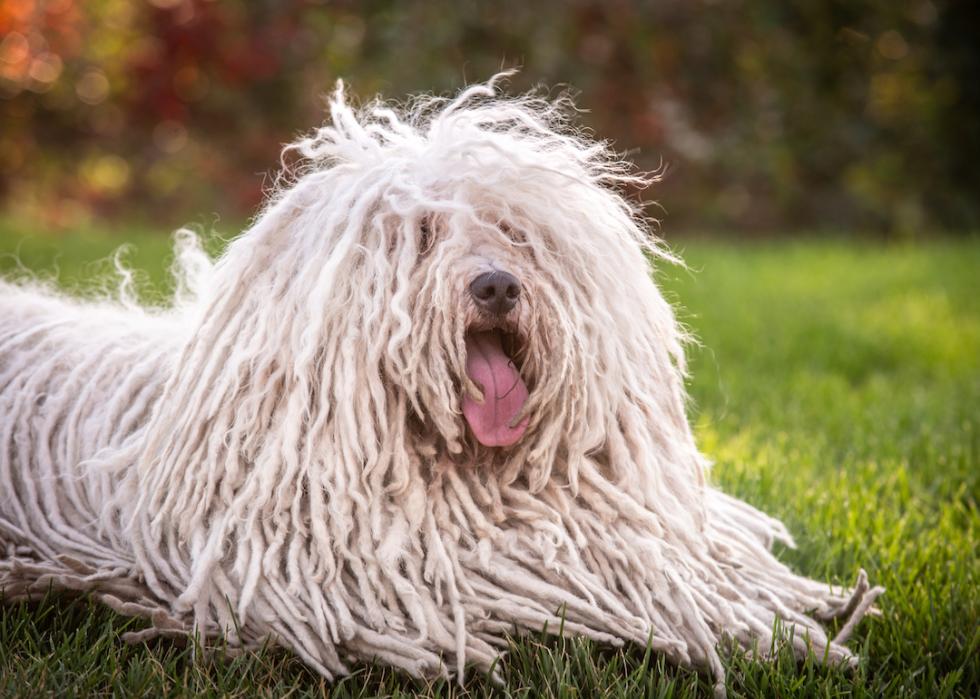
#30. Puli
- 2024 popularity rank: #172 (down 8)
One misconception that has haunted the bright puli is that they have trouble with their eyesight. In fact, the only eye issue plaguing the herding dog is an unruly, long mane that can obstruct vision if not trimmed. As long as you keep your puli well-groomed, its eyesight shouldn't be a problem (although keeping up with the energetic, stubborn breed might be).
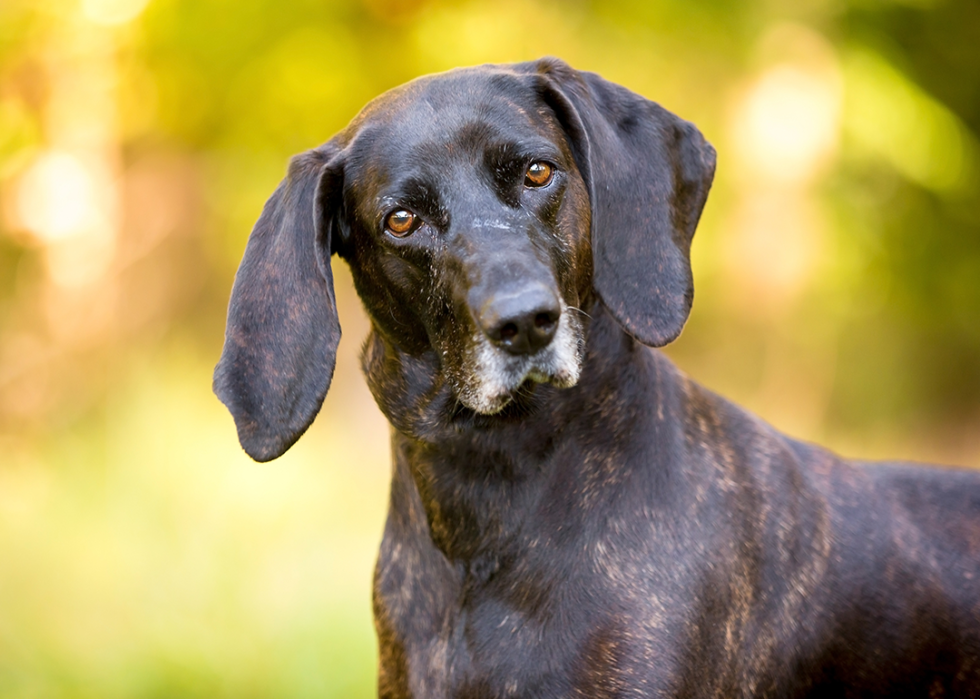
#29. Plott hound
- 2024 popularity rank: #173 (up 8)
This all-American breed was developed in the Smoky Mountains. German immigrant Johannes George Plott and his descendants were responsible for breeding these superior trackers. Plott hounds are best suited for experienced dog owners, as they require consistent training; with a firm leader, these dogs can make wonderful family pets.
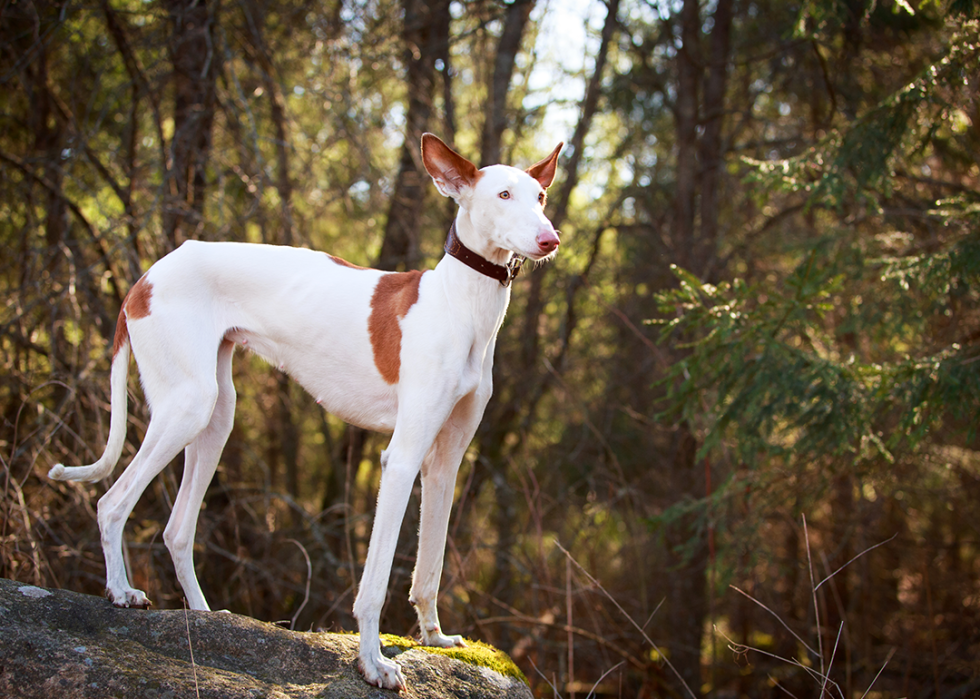
#28. Ibizan hound
- 2024 popularity rank: #174 (down 8)
Ibizan hounds were once owned by Egyptian pharaohs, but they would still be right at home in your less-than-royal abode. These athletic dogs make excellent pets—just be sure they get plenty of exercise to tire them out.
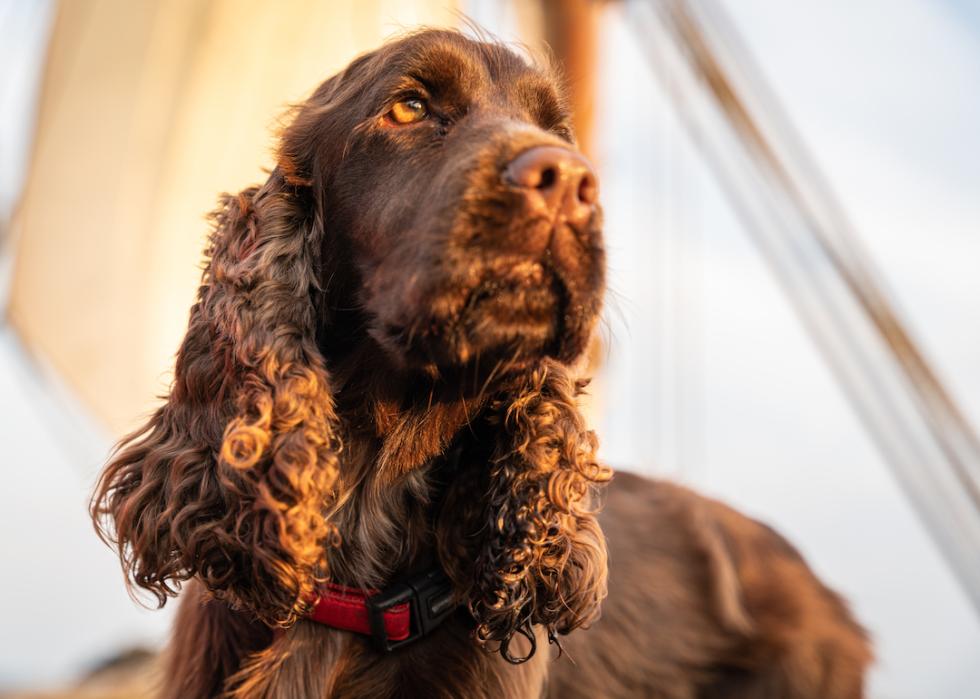
#27. Sussex spaniel
- 2024 popularity rank: #175 (down 1)
Sussex spaniels are talkers—and for good reason. Because their short legs keep them so low to the ground (they max out between 13 and 15 inches tall), these even-tempered, athletic dogs bark and make other noises to alert hunters to their whereabouts.
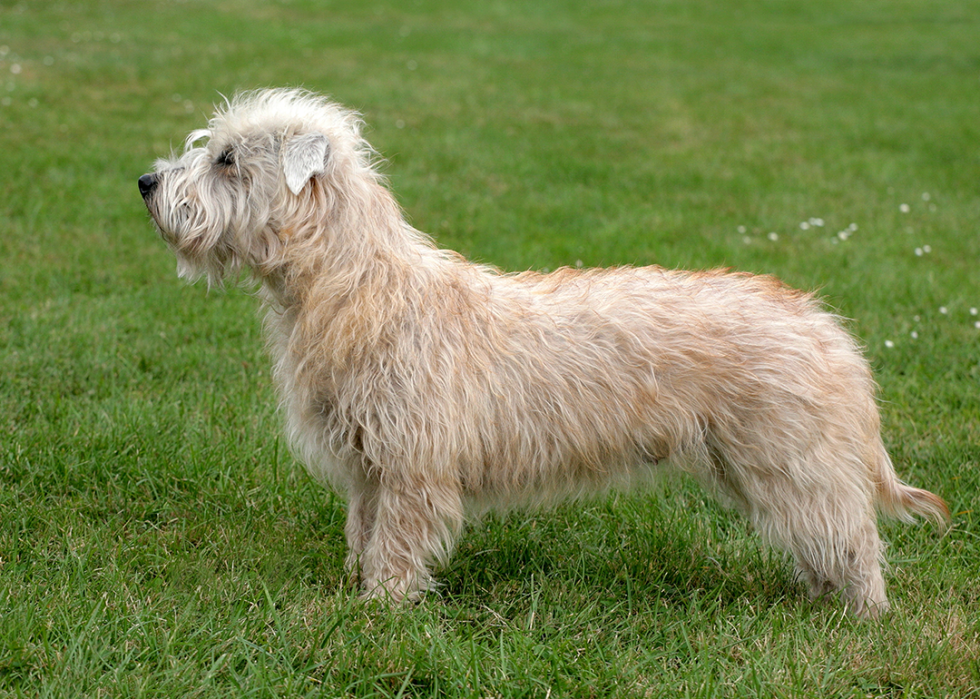
#26. Glen of Imaal terrier
- 2024 popularity rank: #176 (down 6)
The breed originated when Queen Elizabeth I's soldiers settled into the Wicklow region and intermixed their hounds with local terriers, which resulted in these sweet fluff-balls. They make great family pets but may be too strong for young children to play with.
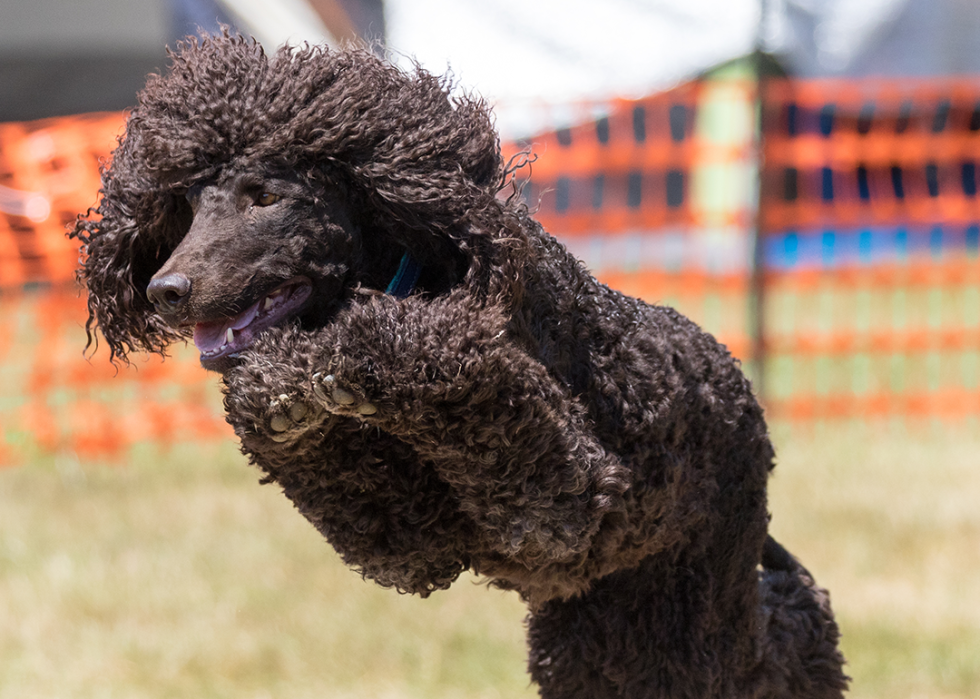
#25. Irish water spaniel
- 2024 popularity rank: #177 (no change)
The Irish water spaniel is the tallest of all the spaniel breeds. These dogs are adept swimmers with water-repellent fur. Irish water spaniels are known for being downright clownish despite their working roots.
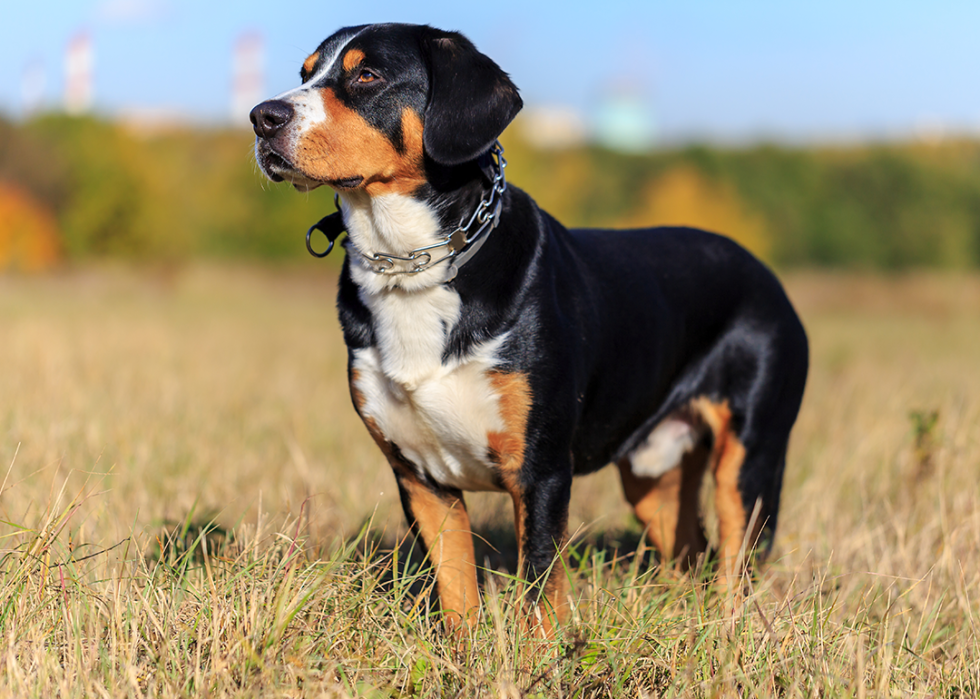
#24. Entlebucher mountain dog
- 2024 popularity rank: #178 (up 5)
Entlebucher mountain dogs can most often be found working in the mountains of Switzerland from where they originate. A cousin of the Bernese mountain dog, it can be difficult to tell the two breeds apart.
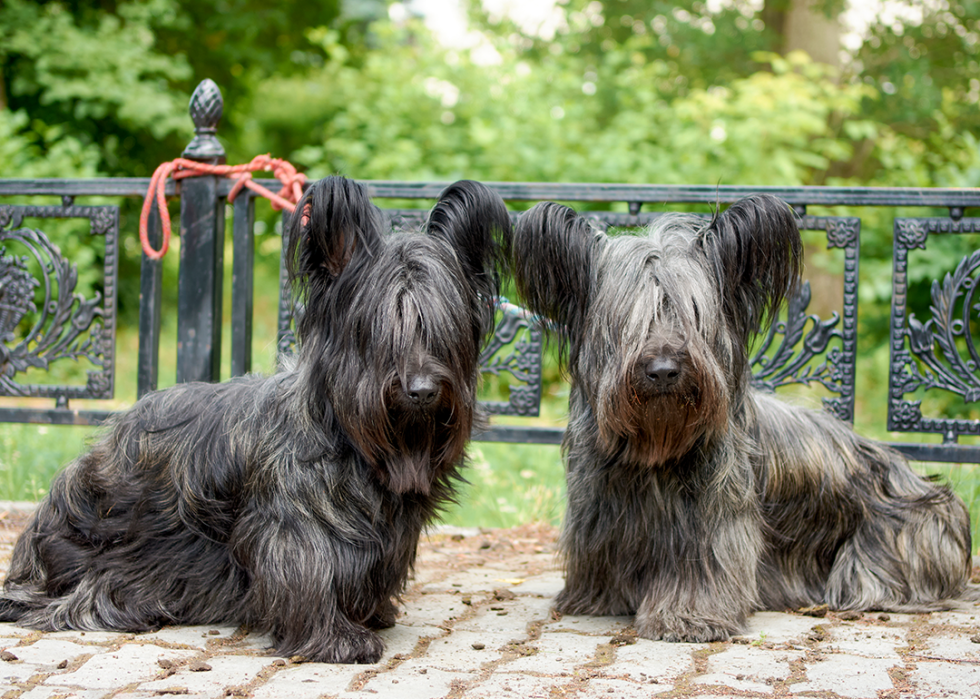
#23. Skye terrier
- 2024 popularity rank: #179 (up 6)
Skye terriers love their owners but can be pretty ambivalent about everyone else. These regal animals were a favorite of Queen Victoria's and have working dog roots.
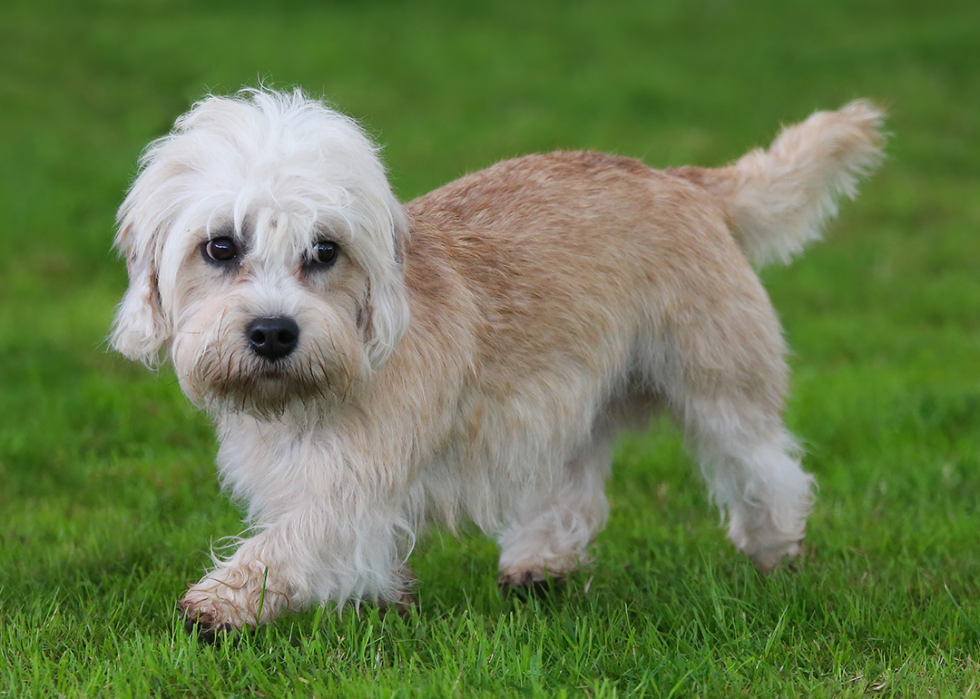
#22. Dandie Dinmont terrier
- 2024 popularity rank: #180 (up 6)
The Dandie Dinmont terrier got its name from Sir Walter Scott's 1815 novel "Guy Mannering." The diminutive dogs are known for their prominent poofs of hair atop their heads, as well as their relatively mild-mannered temperaments.
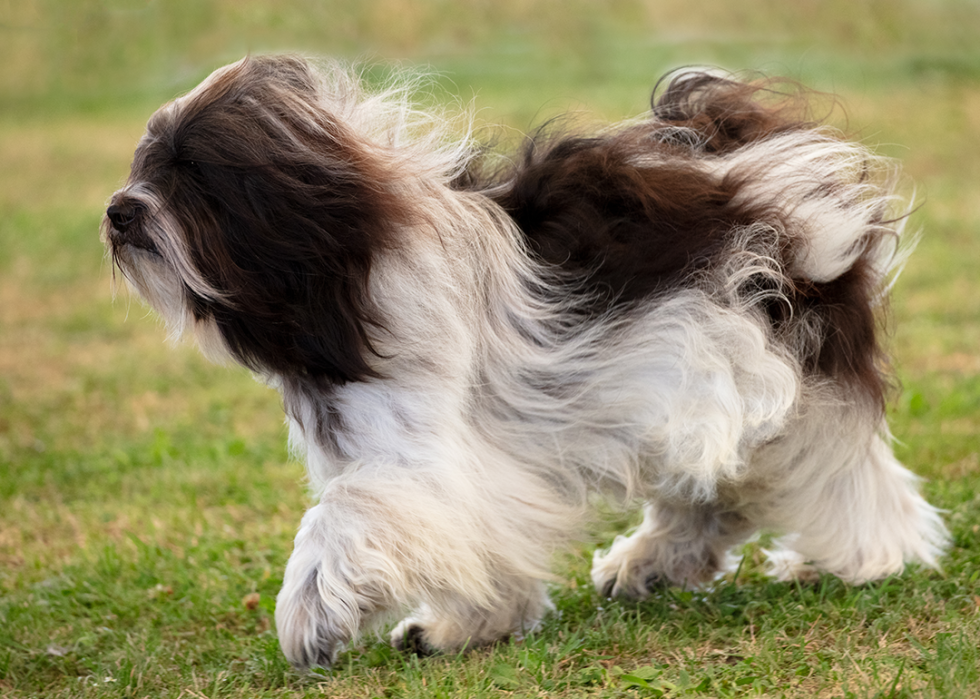
#21. Polish lowland sheepdog
- 2024 popularity rank: #181 (up 12)
The Polish lowland sheepdog is a true hero of a breed. During World War II, a Polish lowland named Psyche is said to have warned people in Warsaw when bombs were going to drop. These pups are happiest when they have jobs, making them highly trainable and eager to please.
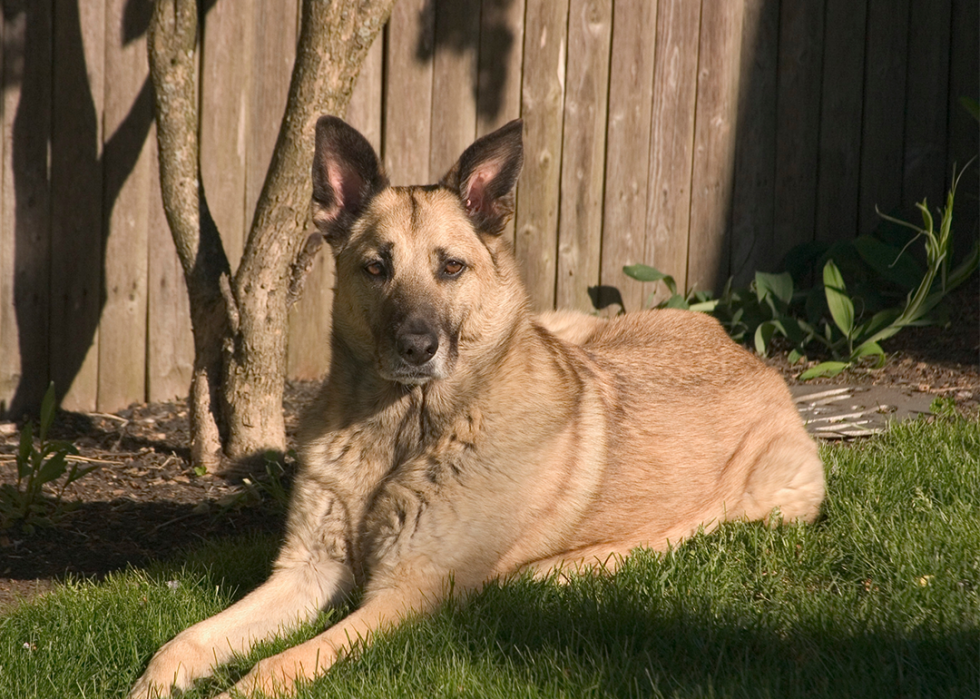
#20. Chinook
- 2024 popularity rank: #182 (down 3)
These sled dogs are named after the dog that started their line. Breeder Arthur Walden crossed his dog Chinook with a stock husky to create the breed. Sadly, Chinook was later lost during an expedition to Antarctica. These dogs are amazing family pets, known for their gentle nature and excessive affection.
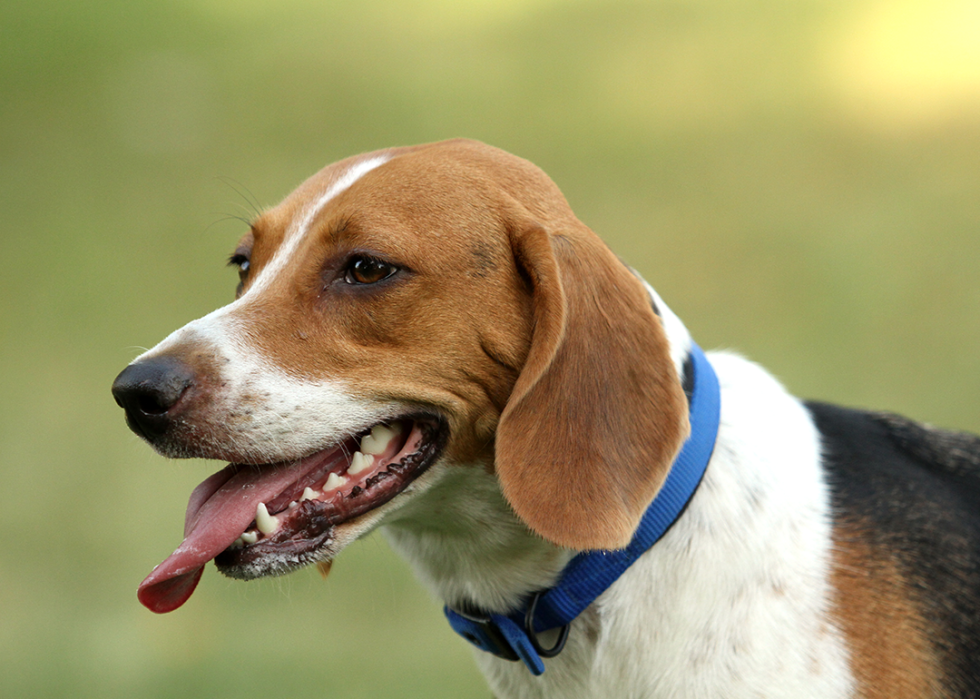
#19. Harrier
- 2024 popularity rank: #183 (up 7)
A member of the hound group, these hearty little pooches are sometimes mistaken for beagles. Although they have a history as hunters, this is one breed that has adapted beautifully to life as a family pet. Harriers usually love children, but their energy might make them a bit too much for younger kids to handle.
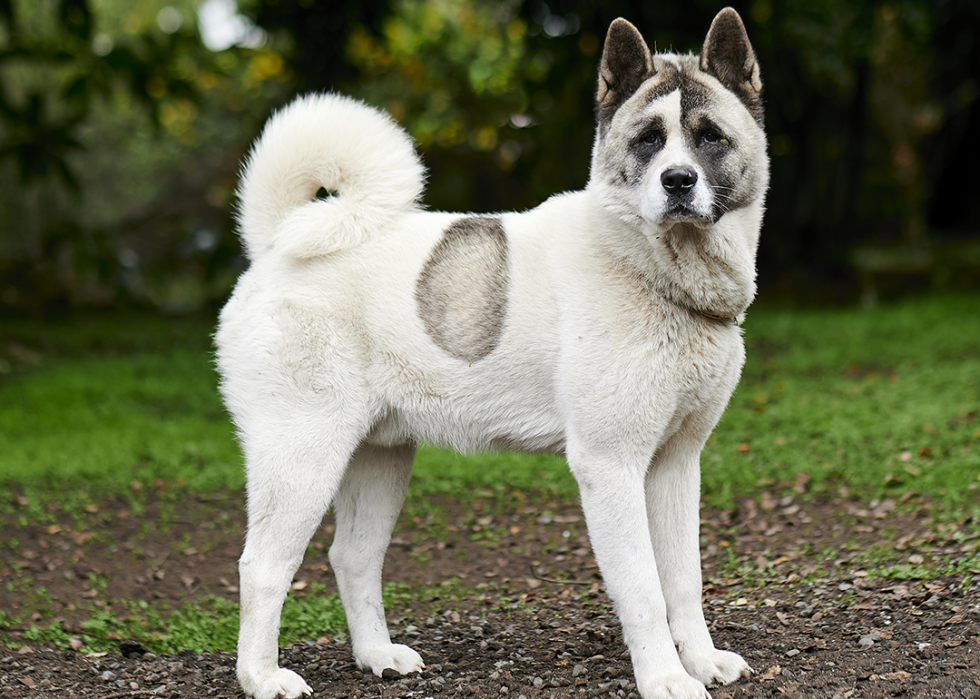
#18. Norwegian buhund
- 2024 popularity rank: #184 (down 9)
Known as the dog of the Vikings, the Norwegian buhund is an ancient breed. The dog's history of riding shotgun with the Vikings continues. These are hardworking dogs that are readily able to help on the farm or help take care of a family. They are quite talkative, however, and their lush coats make for a lot of shedding.
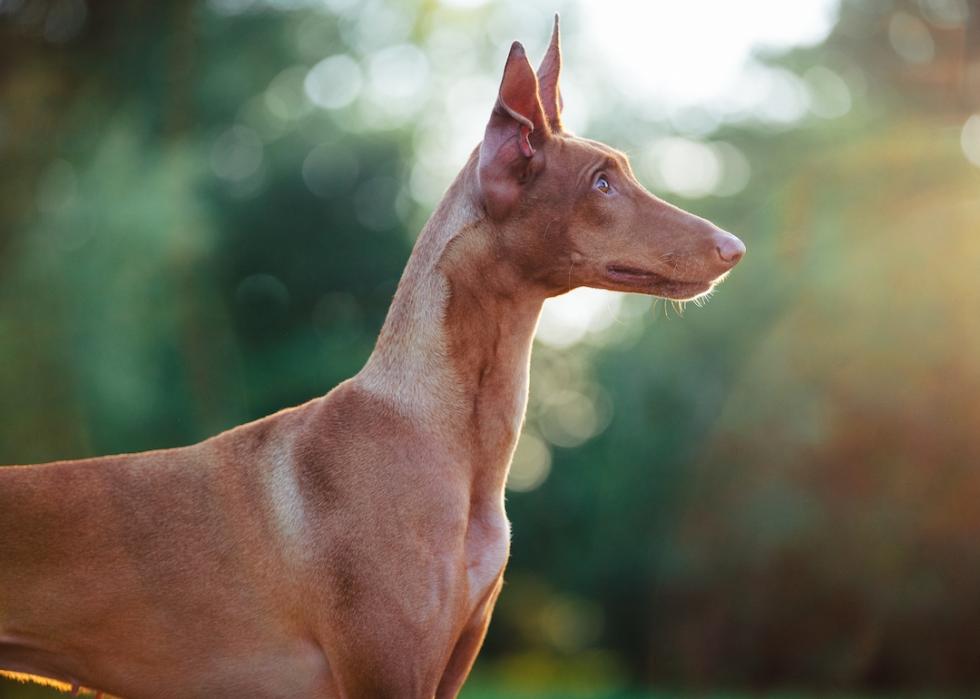
#17. Pharaoh hound
- 2024 popularity rank: #185 (down 9)
Malta's national dog is a favorite in the United States as well. This dynamic breed is exceptional at hunting rabbits and requires a tall fence to keep the high-jumper from straying.
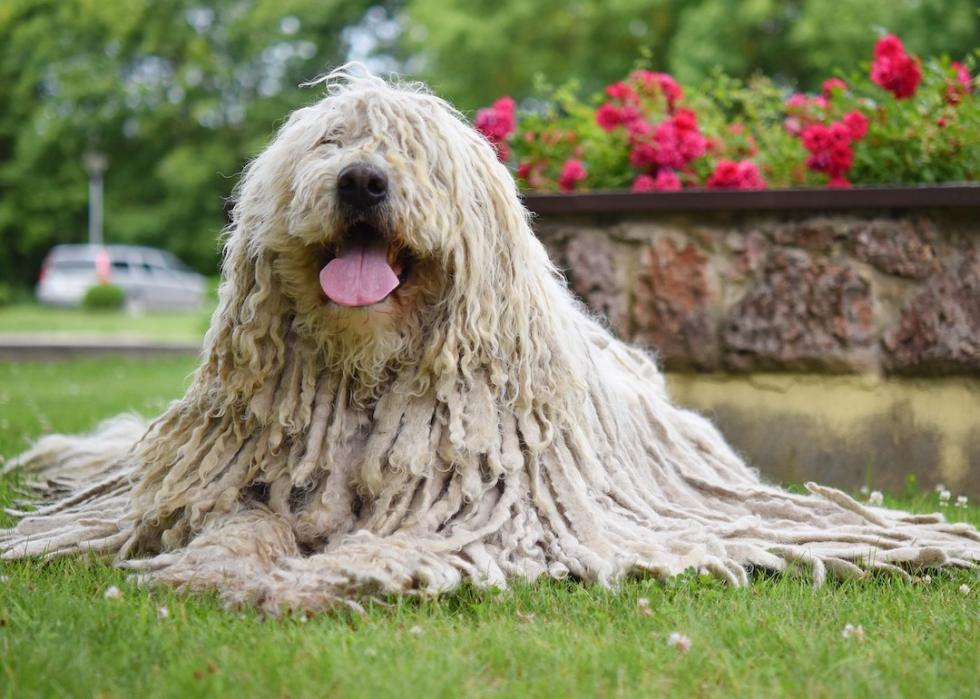
#16. Komondor
- 2024 popularity rank: #186 (down 6)
There's just no getting around the fact that a komondor's fur looks an awful lot like a mop. But there's a good reason for that: Their coats act as camouflage so that they can blend in with sheep and surprise any wolves that get too close.
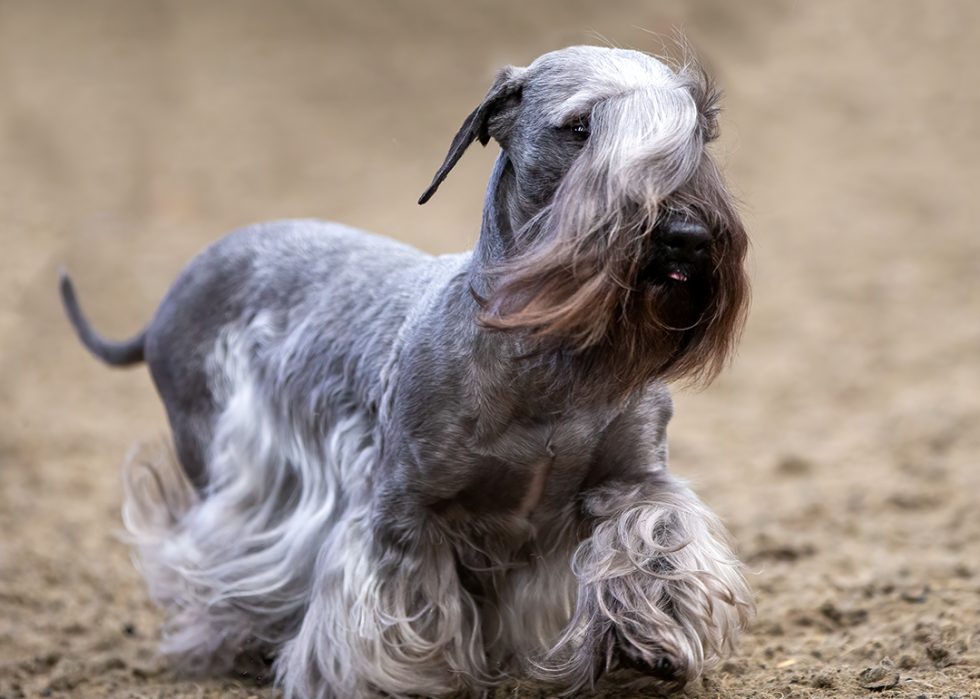
#15. Cesky terrier
- 2024 popularity rank: #187 (up 5)
The American Kennel Club claims that, as of 2017, there were only around 600 Cesky terriers in the U.S. This calm terrier breed may be rare stateside, but those who have the privilege of being a Cesky owner likely know that they're keen hunters and eager agility competitors.
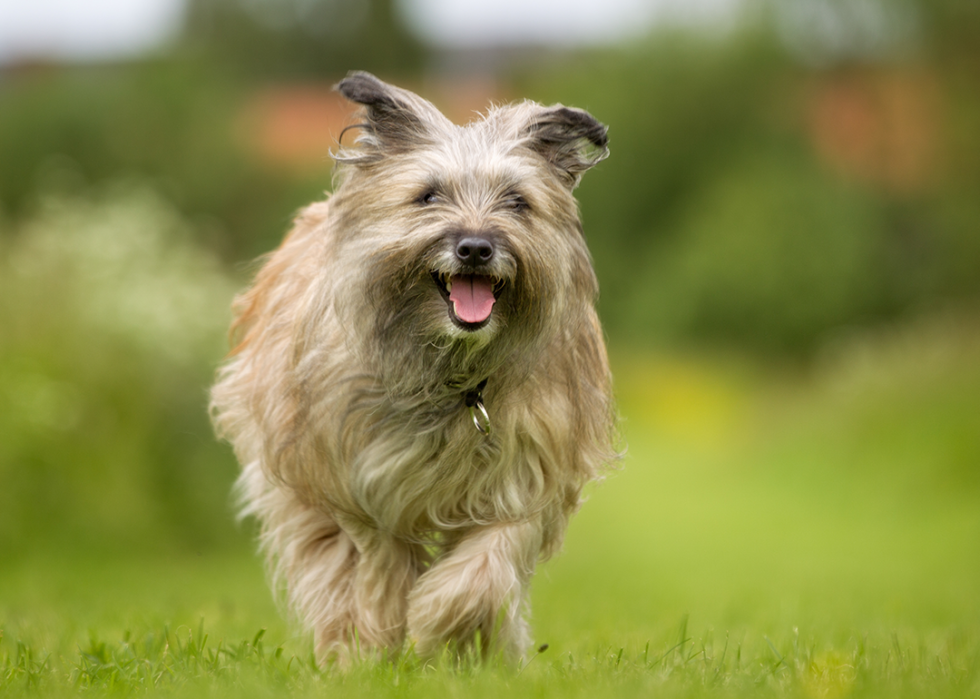
#14. Pyrenean shepherd
- 2024 popularity rank: #188 (down 1)
World War I brought these small sheepdogs out of the mountains and into the war zone. The breed served as couriers, led search-and-rescue missions, and worked side by side with soldiers.
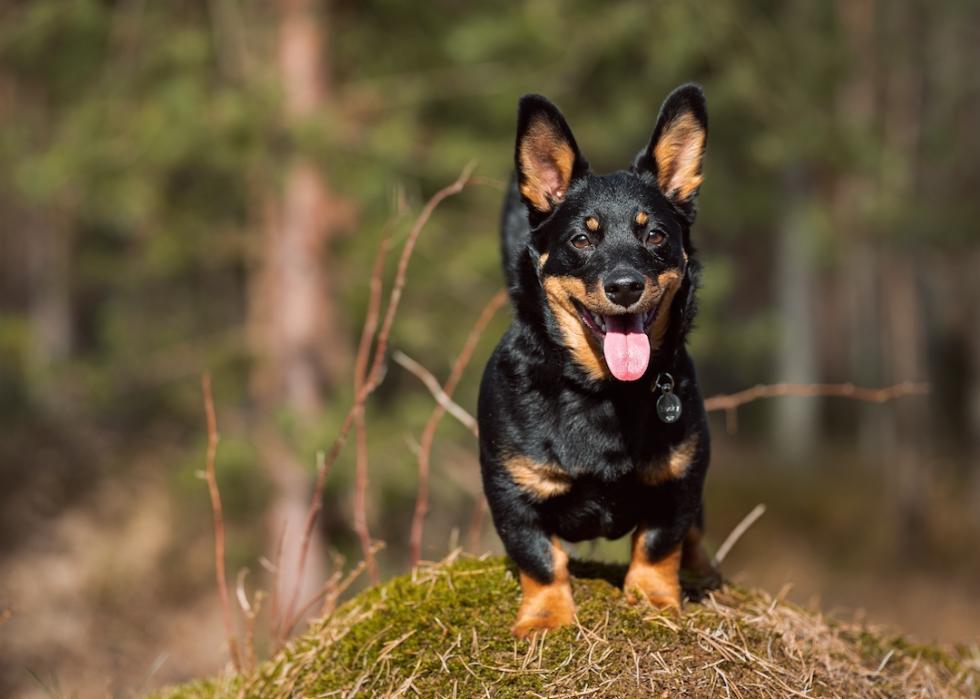
#13. Lancashire heeler
- 2024 popularity rank: #189 (not applicable)
After earning official AKC breed recognition in 2024, Lancashire heelers ended the year near the bottom of the popularity rankings. Regardless, these energetic pups tend to be a hit with their owners—intelligent and highly affectionate, the short, sturdy Lancashire heeler is bred to work with cattle but is up for anything.
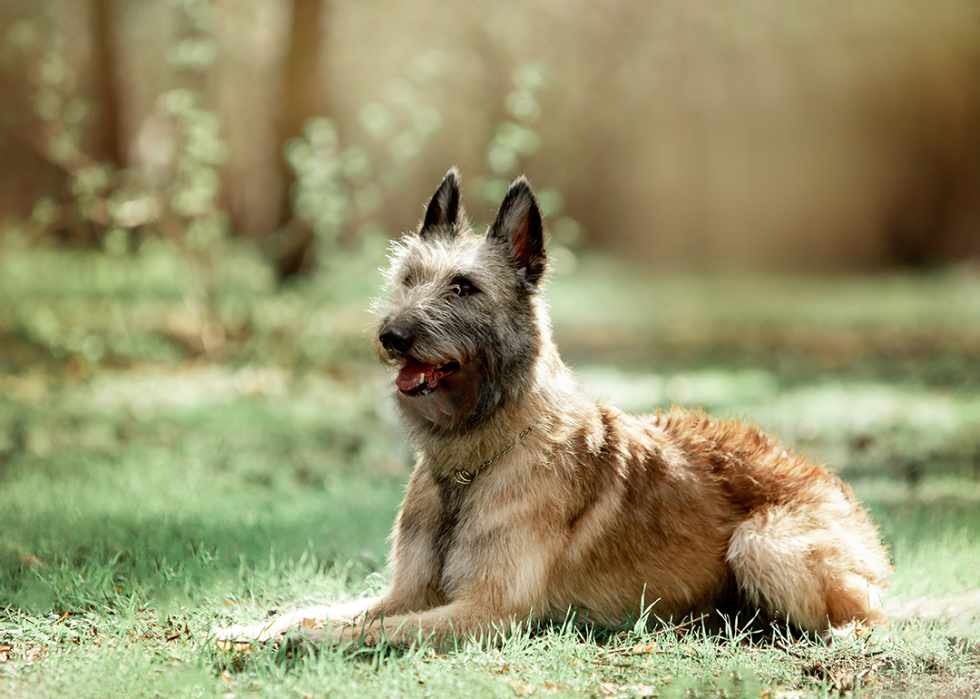
#12. Belgian Laekenois
- 2024 popularity rank: #190 (up 5)
This rare breed was only officially recognized by the American Kennel Club in 2020, although it is thought to have originated in the 1880s as a Belgian herding dog. The Laekenois was used as a messenger dog during both the World Wars and was even targeted by Hitler. There are currently only about 1,000 Laekenois worldwide.
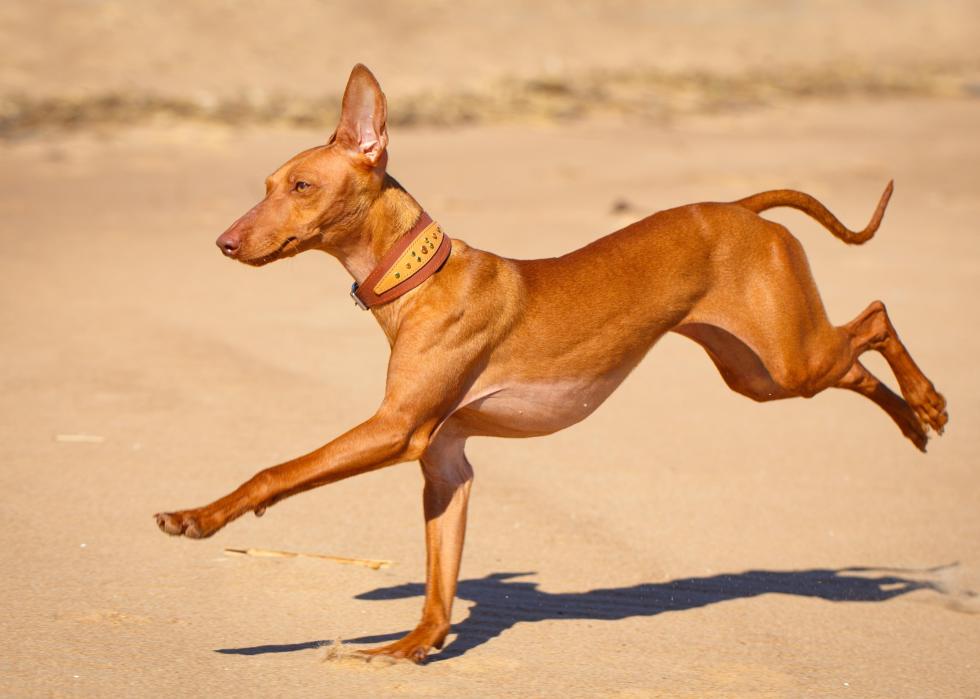
#11. Cirneco dell'Etna
- 2024 popularity rank: #191 (down 7)
First recognized by the AKC in 2015, this ancient breed's name means "dog of Cyrene (Libya)." These agile dogs have remarkable instincts for hunting—especially when it comes to rabbits.
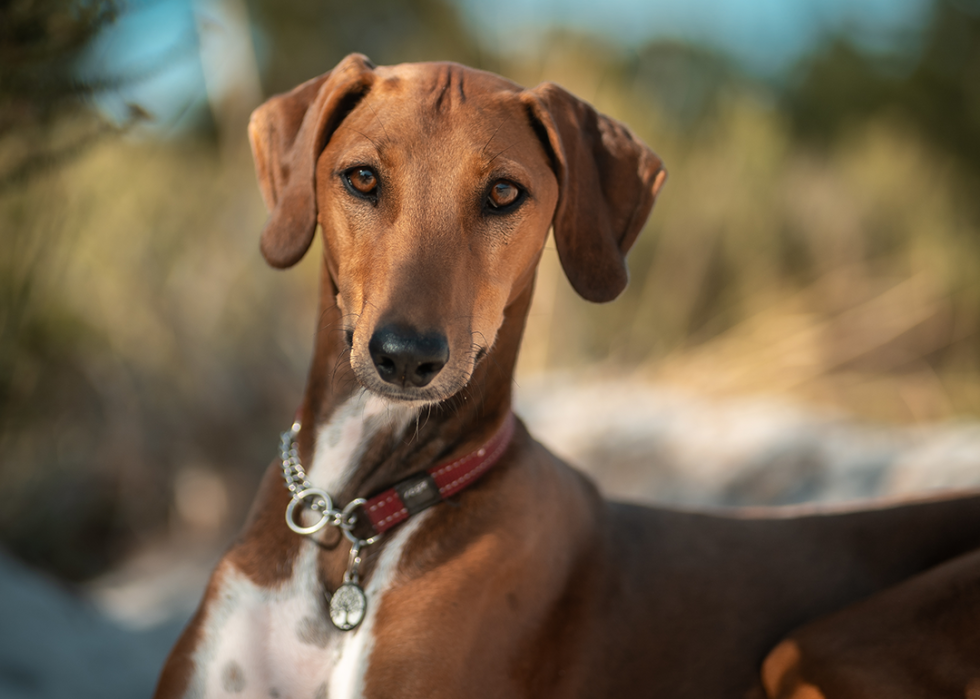
#10. Azawakh
- 2024 popularity rank: #192 (up 4)
The lack of Azawakh popularity in the U.S. is attributable to its rarity, recency, and unfamiliarity in the states. The African sighthound traces its origins to ancient times on the continent's western region, roaming the Sahara alongside nomads. The first Azawakh arrived in America in the 1980s, birthing the first domestic litter by the end of the decade. The AKC classified them as "miscellaneous" in 2011, and then they joined the official Hound Group in 2019.
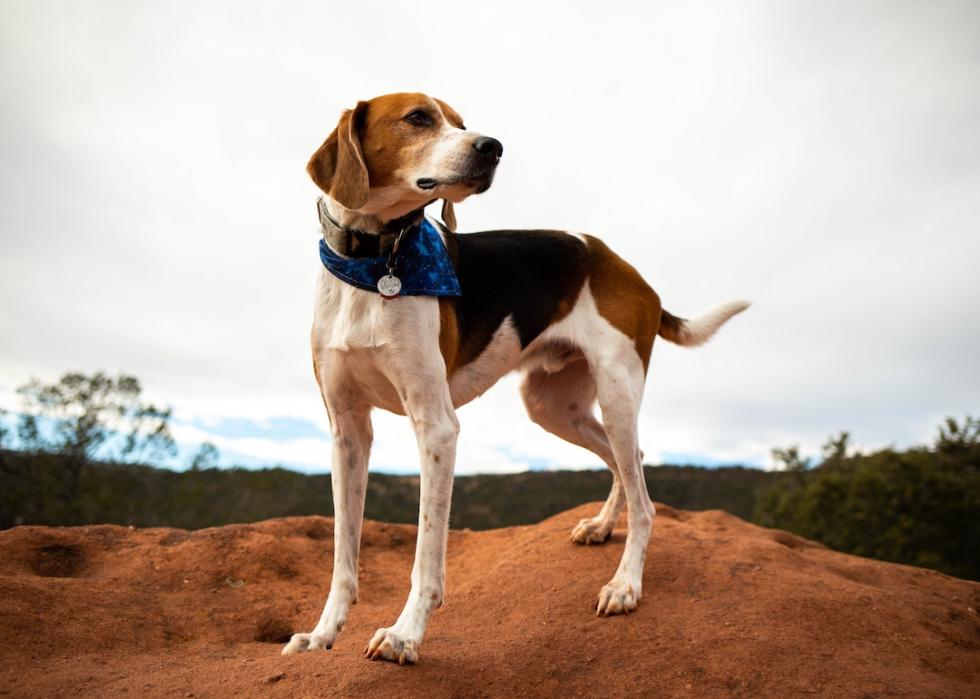
#9. American foxhound
- 2024 popularity rank: #193 (down 11)
As the state dog of Virginia, American foxhounds are a beloved hunting breed and originated from dogs brought over to the American colonies. These dogs are particularly valuable during search-and-rescue missions, thanks to their keen sense of smell. They're also great with children, some of whom even learned to walk while holding onto the breed's tail.
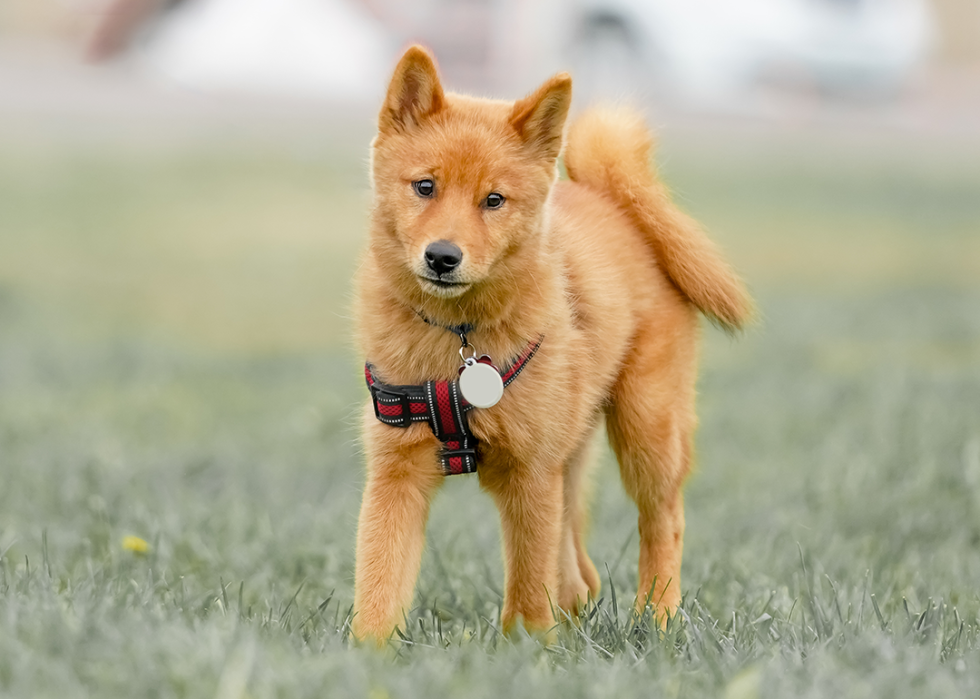
#8. Finnish spitz
- 2024 popularity rank: #194 (no change)
Taimyr wolves live on through the Finnish spitz. The ancient breed of wolves is extinct, but DNA research has shown that they were at least partly responsible for the existence of these champion barkers with a foxlike appearance. These smart dogs are fast learners, but they're also cunning and will find ways to challenge their trainers.
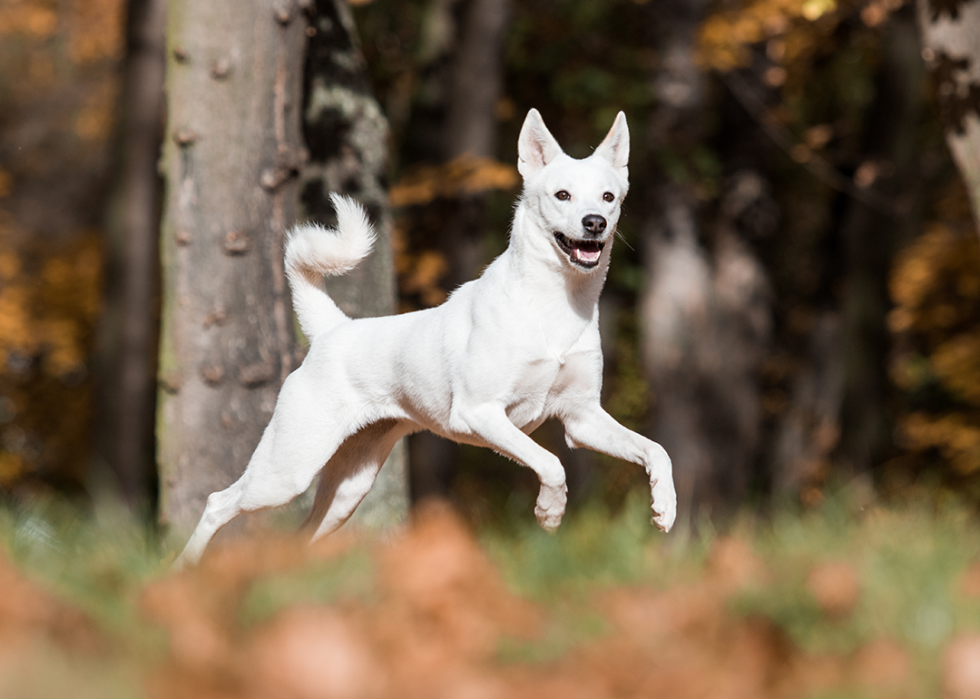
#7. Canaan dog
- 2024 popularity rank: #195 (down 4)
Canaan dogs have a rich history dating back to Biblical times. Before the Romans destroyed Jerusalem, Canaan dogs herded sheep and other livestock. After their owners were driven out of their homeland, the dogs fled to the desert where they lived undomesticated until the 20th century.
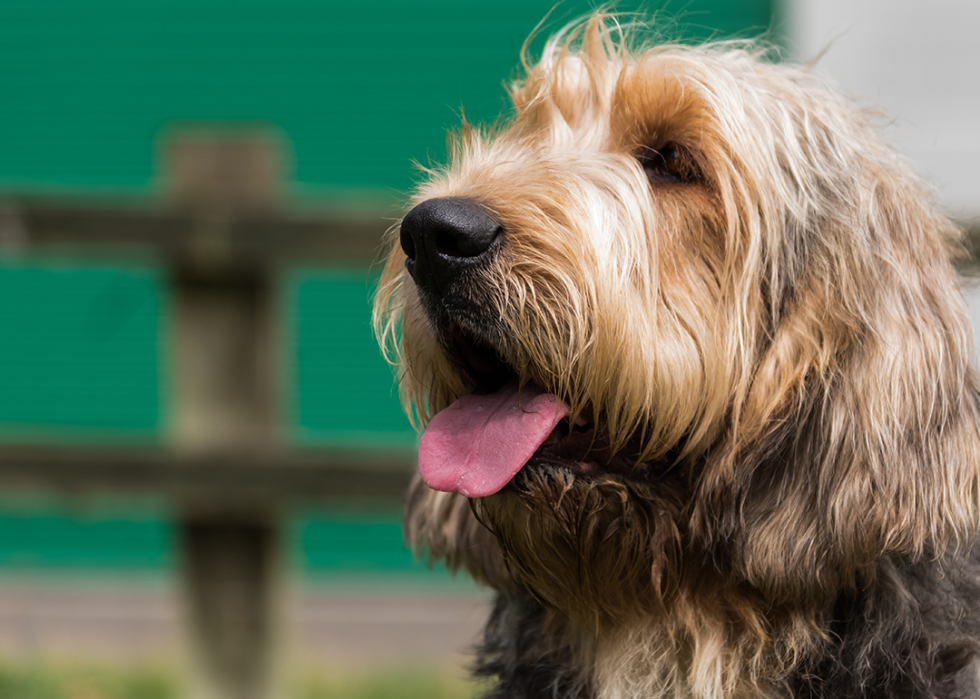
#6. Otterhound
- 2024 popularity rank: #196 (down 7)
There are said to be fewer than 350 otterhounds currently in the United States and less than 1,000 worldwide. These dogs make great pets due to their even temperaments and friendly nature, but their thick double coats require at least weekly brushings.
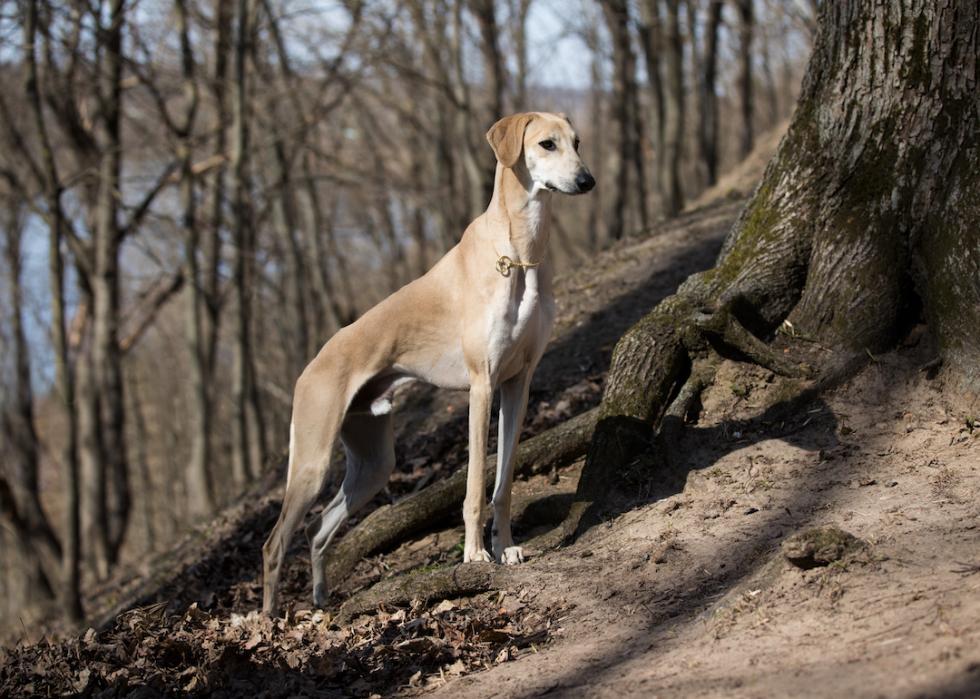
#5. Sloughi
- 2024 popularity rank: #197 (up 3)
Sloughi owners have been loyal to their dogs since ancient times—at least if the maxims are to be believed. These elegant animals have found favor with royals throughout history. They say the breed may have arrived in Europe through the Berber cavalrymen that came along with Hannibal as he crossed the Alps.
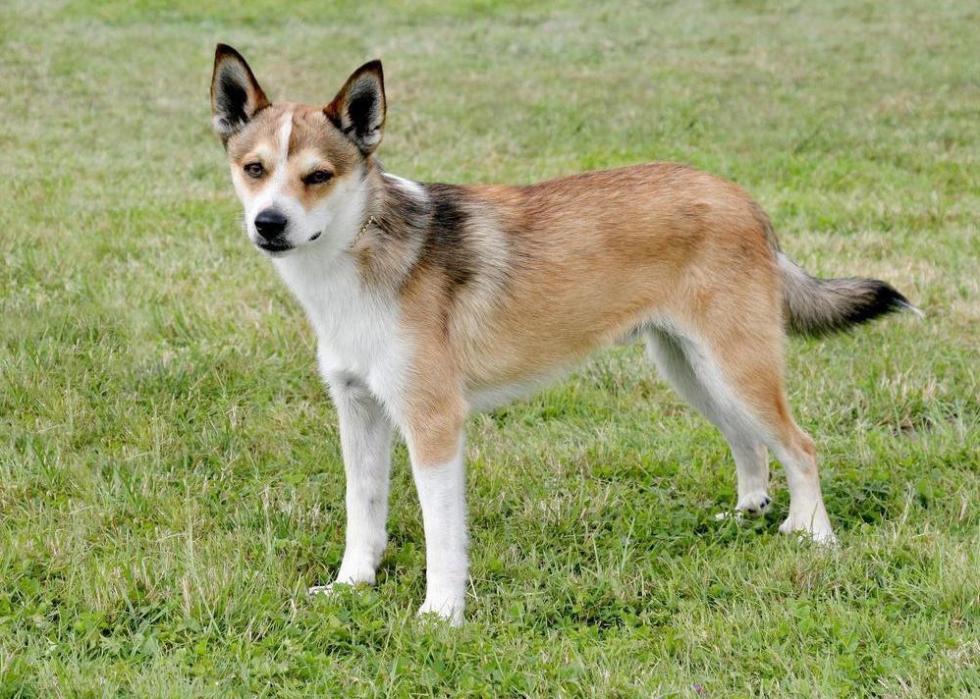
#4. Norwegian lundehund
- 2024 popularity rank: #198 (no change)
Norwegian lundehunds boast two unusual characteristics that make them skilled at sniffing out puffins. These curious pups have six toes on each foot that seem to have developed to help them navigate slippery rocks. They can also fold their ears shut—which protects them from water and helps out when crawling into a puffin burrow.
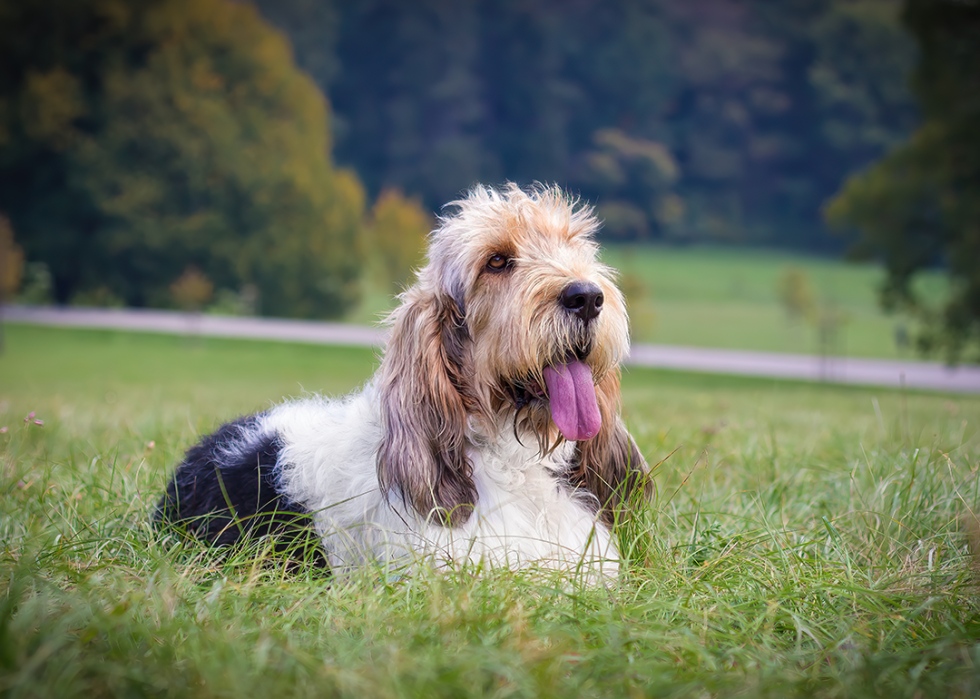
#3. Grand Basset Griffon Vendeen
- 2024 popularity rank: #199 (down 2)
This newly recognized French breed is rare in the United States because of its breeding difficulty. Owners of these hunting hounds report they are quiet, family-friendly companions that require vigorous daily exercise to work off their huge amounts of excess energy. Their name is also descriptive, roughly translating "large, low, shaggy dog of the Vendée."
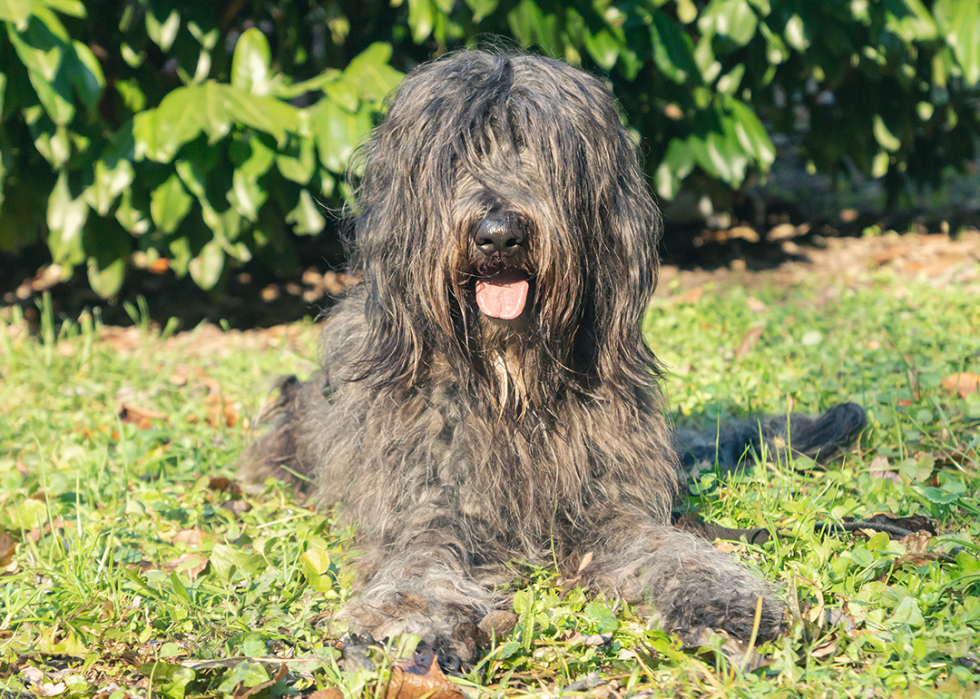
#2. Bergamasco sheepdog
- 2024 popularity rank: #200 (down 12)
These sheepdogs have instantly recognizable coats of long, curly fur that need to be well-groomed. If you're up for the task, then this Italian breed is perfect for active families with big yards.
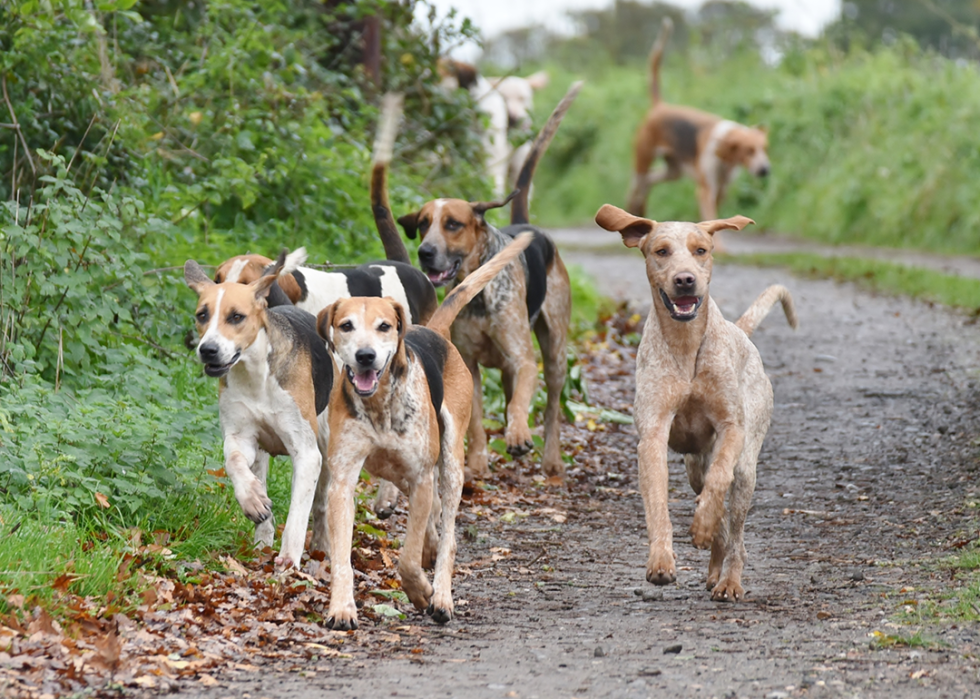
#1. English foxhound
- 2024 popularity rank: #201 (down 2)
Unlike many hunting dog breeds, English foxhounds still haven't completely caught on as companion dogs in the traditional sense. Generally, these dogs are kept by hunters and live in packs trained to chase foxes.



